 Nuclear-powered ballistic missile submarines (1976-97), 18 in service, 24 planned (SSBN-726-743).
Nuclear-powered ballistic missile submarines (1976-97), 18 in service, 24 planned (SSBN-726-743).Cold War US Subs
GUPPY | Barracuda class | Tang class | USS Darter | T1 class | X1 class | USS Albacore | Barbel classUSS Nautilus | USS Seawolf | Migraine class | Sailfish class | Triton class | Skate class | USS Tullibee | Skipjack class | Permit class | Sturgeon class | Los Angeles class | Seawolf class | Virginia class
Fleet Snorkel SSGs | Grayback class | USS Halibut | Georges Washington class | Ethan Allen class | Lafayette class | James Madison class | Benjamin Franklin class | Ohio class | Colombia class
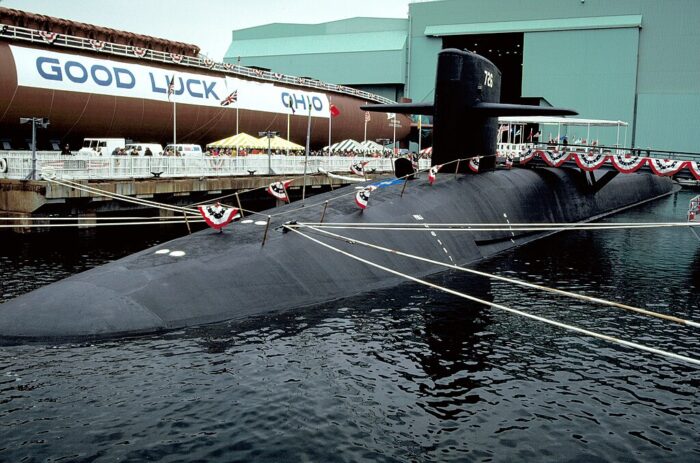
The Ohio-class SSBN (Ship Submersible Ballistic Nuclear) submarines became the largest US submarines ever built. They were and are still the backbone of the United States’ strategic nuclear deterrent force, carrying a substantial portion of the country’s nuclear deterrent capability under sea. The primary mission of Ohio-class SSBNs is strategic nuclear deterrence (“boomers”) designed to stay hidden at sea and provide a secure, second-strike capability in the event of a nuclear conflict. Each Ohio-class SSBN is capable of carrying 24 Trident II D5 ballistic missiles. These missiles are MIRVed (Multiple Independently Targetable Reentry Vehicle), meaning they can carry multiple warheads aimed at different targets. The Trident II missiles are extremely accurate, with a range of over 7,500 miles (12,000 kilometers), making them a formidable part of the nuclear triad.
The Ohio-class submarines superficially resembled a stretched Los Angeles class SSN, with a length of 560 feet (170 meters) and a beam of 42 feet (13 meters) and displacing approximately 18,750 tons when submerged making them the largest US navy submarines ever built. Still not as impressive as some Soviets subs such as the contemoorary Typhoon/Oscar, but the general philosophy was more conversative. The Ohio-class SSBNs were the first powered by a S8G nuclear reactor so to remain submerged for extended periods—up to 90 days at a time for a top speed of 20-25 knots.
They are are designed for stealth and operating quietly, with features to greatly reduce noise. Their endurance is limited only by food supplies and remaining submerged for up to three months. They still operates in a two-crew system (Blue and Gold crews) for continuous deployment and near-uninterrupted patrol cycle.
The Ohio-class SSBNs are being replaced by the Columbia-class SSBNs, expected to begin entering service in the 2030s. The Columbia-class incorporates advanced technologies to enhance stealth and survivability and are going to stay active at least until 2060.
Originally, the Ohio class included 18 submarines: 14 SSBNs (ballistic missile submarines) and 4 SSGNs (guided-missile submarines converted from ballistic missile submarines to carry conventional weapons after the end of the Cold War). Like the Los Angeles class they were the object of massive upgrades but less estensive than the latter’s flights. The original serie 24 was curtailed after the end of the cold war, just as the Seawolf class SSN.
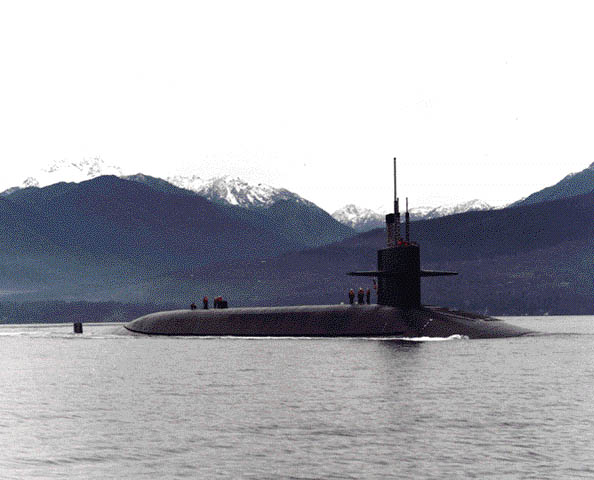
USS Henry M Jackson
Development: STRAT-X program (1967-71)
The STRAT-X (Strategic-Experimental) government-sponsored study in 1966-1967 comprehensively analyzed the potential future of the U.S. nuclear deterrence. The Soviet Union made massive efforts to consolidate its own deterrence, with better ballistic missiles and carriers, and started to built solid anti-ballistic missile defenses to protect its most strategic facilities. There was a developing potential technological gap and thus, wile the Vietnam war was raging with growing intensity, U.S. Secretary of Defense Robert McNamara went via the STRAT-X study to the Institute for Defense Analyses, compiling a 20-volume report in 9 months. More than 100+ different weapons systems were studied, and they resulted in programs suc as the MGM-134 Midgetman and LGM-118 Peacekeeper intercontinental ballistic missiles, but also the the Ohio-class submarines and Trident SLBM. This was a turning point for US deterrence.
US Intel warned the Pentagn and white house about highly accurate and powerful ICBMs, notably the R-36. This was the largest, at 8.8 tonnes (19,000 lb), better than US models at the time. Its high-yield warheads could detroy the Minuteman hardened silos and negate any counter strike. This wa spaired with more sophisticated anti-ballistic missile defense systems, notably around Moscow so to negate incoming ICBMs. Robert McNamara thus commissioned this study, STRAT-X being an answer to DoD Deputy Director of Defense Research and Engineering Lloyd Wilson, and the U.S. Air Force which asked for a new large ICBM, the WS-120A. The study resulted in the funding for missile beign iced over and the program was canceled in 1967.
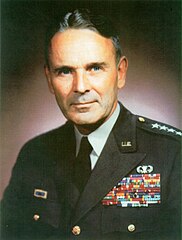 STRAT-X studied sea, air and land-based systems, conducted by a branch of the independent and non-profit Institute for Defense Analyses (IDA) which in 1966 released “Pen-X”, STRAT-X being a development. It was headed by General Maxwell D. Taylor (of D-Day 101st Para fame), and Fred Payne at the head of STRAT-X’s “working” panel. They contacted major independent corporations and defense contractors: Boeing, Booz Allen Hamilton, Thiokol and TRW among others. There was an Advisory Committee of officers, and this included representative of the navy, Rear Admirals George H. Miller and Levering Smith.
STRAT-X studied sea, air and land-based systems, conducted by a branch of the independent and non-profit Institute for Defense Analyses (IDA) which in 1966 released “Pen-X”, STRAT-X being a development. It was headed by General Maxwell D. Taylor (of D-Day 101st Para fame), and Fred Payne at the head of STRAT-X’s “working” panel. They contacted major independent corporations and defense contractors: Boeing, Booz Allen Hamilton, Thiokol and TRW among others. There was an Advisory Committee of officers, and this included representative of the navy, Rear Admirals George H. Miller and Levering Smith.
On 1 November 1966 the study started under the guise of being “encouraged to examine system concepts unrestrained by considerations of potential management problems or political influences.” MacNamara wanted “path-breaking” weapons systems offensive or defensive that woud circumvent bureaucracy and to stifle innovation. The Air Force was less favored as the study purposefully dropped crewed bombers or orbital systems. Beyond all, cost effectiveness and prediction of possible Soviet responses. Letters from Soviet Minister of Defense General Andrei Grechko were also studied. The 20-volume report covered 125 ideas for missile systems, nine reviewed in great detail as the most promising.
Of these, five were land-based and of the remaining four, three were sea-based. There were:
The “Canal-Based” system with launching pads sailed in US canals to confuse Soviet intel.
The Civilian ship based system in hidden missile canisters travelling around the world withing traffic
The Submarine-Based ballistic missile with canisters outside the pressure hull.
… and a single USAAF “Air Launched ICBM” from a large aircraft.
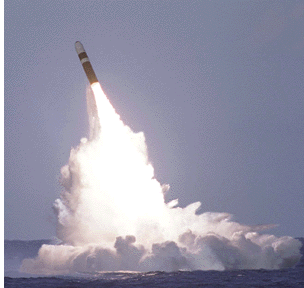 None of these proposals were fully implemented apart the “Land Mobile” option (MGM-134 Midgetman, LGM-118 Peacekeeper missiles) but in the early 1990s the first was canceled and only 50 Peacekeeper missiles fielded. In October 1974, a C-5 Galaxy tested the “Air Launched ICBM” but it was not conclusive.
None of these proposals were fully implemented apart the “Land Mobile” option (MGM-134 Midgetman, LGM-118 Peacekeeper missiles) but in the early 1990s the first was canceled and only 50 Peacekeeper missiles fielded. In October 1974, a C-5 Galaxy tested the “Air Launched ICBM” but it was not conclusive.
What really was instrumental was for the Navy. Emphasis wa sput on the survivability of SLBMs and the need for a brand new carrier, the future Ohio-class submarine and its new Trident SLBM. The study spoke of a dedicated “slow-moving missile-carrying submarine” not a converted attack submarine such as a stretched Lose Angeles class as some at the time suggested to keep budgets low. But the narrow hull would have been unsuficcient for larger SLBMs. Empashsis was put on steath and carrying missiles outside the hull.

Artist’s impression of the Ohio class in 1972.
Admiral Hyman Rickover (director of the Naval Reactors office) objected the slow speed, arguing at the contraty for a platform capable of high speed withdrawals after firing a salvo. Thus this becalme the angular stone of the new Ohio class design. It was was not only created around its new trident missiles, much larger than formed SLBMs and on par or superor to Soviet Ones. The hull was also, unlike the Los Angeles, wrapped around a pair of massive new nuclear reactors to produce the intended speed. It is still classified to this day, and if officially 25 knots are the norm, many experts estimated a 30+ knots “burst” had been incorporated early on into the powerplant capabilities. Also, instead of having the missiles outside the pressure hull, they are kept inside, in a more traditional way.
STRAT-X was still an influencial work, praised in the RAND corp. 2002 report as “one of the most influential analyses ever conducted” for the U.S. DoD. An instrument “shaping the nuclear triad for decades” and a “model for such efforts today”. Its most substantial influence remains the Ohio-class submarines and the concept of small and mobile ICBMs as well as the air-launched cruise missiles carried by the B-52 Stratofortress…
Development of the Ohio class
The Ohio class was designed after the study, in 1968-69 so a few years after the Los Angeles class, which first keel was laid down in 1971. The new project started in 1971 concurrently designed Trident ballistic missile. The first eight were to be armed with 24 Trident I C4 SLBMs instead of the usual practice of having twelve missiles.
The Ohio-class were designed for extended strategic deterrent patrols abd carried two complete crews (Blue and Gold) rotating for 70-to-90-day patrols. The Ohio was partly conceived to decrease time in port for crew turnover and replenishment. Powerplant-wise, efforts were made to augment major overhaul intervals to 15 years. Indeed engineers managed to install three large logistics hatches for large-diameter resupply and repair, with a far better access. These hatches enable the entry of full supply pallets and equipment replacement modules, as well as bulky machinery components, speeding up replenishment and maintenance. This enable a much faster resupply and enabled quicker rotations. This too, with the much greater nuclear paylopad, was an argument to accept a drastic reduction from 40 to just 24 (as initially planned) hulls.
Engineers also worked on the “stealth” ability and wanted to improve it massively compared to all previous SSBNs. The previous mass of SSBNs was intended to deal with the always possible reduction by boats being detected and destroyers by always improving Soviet SSNs. However if the new subs were nearly undetectable, the game was changed. The Ohio class was described at the time like 1000 times more discreete than a Layafette class. The acoustic signature was said to be reduced to a mere fish, a “biologic” in sub parlance. This was the sum of all measures taken, many of which proceeded from British RN ideas implemented on the Swiftsure class SSN notably, like an intensive rafting of the while poweprlant, specially the transmission. In fact this was done so well, that USS Ohio became undetectable during her sea trials in 1982 despite expected fixes to make.
The Ohio class were also reported just as quiet at 20 knots (37 km/h; 23 mph), whereas a late Lafayette-class could not go beyond 6 knots. The real assessment of these cahracteristics remained of course classified as the soundproofing measures taken, rafting and acoutic tiles coating of the outer hull.
The Ohio-class submarines were constructed from sections of hull, with each four-deck section being 42 ft (13 m) in diameter.[6][9] The sections were produced at the General Dynamics Electric Boat facility, Quonset Point, Rhode Island, and then assembled at its shipyard at Groton, Connecticut.[6]
The US Navy has a total of 18 Ohio-class submarines which consist of 14 ballistic missile submarines (SSBNs), and four cruise missile submarines (SSGNs). The SSBN submarines provide the sea-based leg of the U.S. nuclear triad. Each SSBN submarine is armed with up to 20 Trident II submarine-launched ballistic missiles (SLBM). Each SSGN is capable of carrying 154 Tomahawk cruise missiles, plus a complement of Harpoon missiles to be fired through their torpedo tubes.
Design of the class

(1) Sonar dome, (2) Main ballast tanks, (3) Computer room, (4) Integrated radio room, (5) Sonar room, (6) Command and control center, (7) Navigation center, (8) Missile control center, (9) Engine room, (10) Reactor compartment, (11) Auxiliary machinery room no. 2, (12) Crew’s berthing, (13) Auxiliary machinery room no. 1, (14) Torpedo room, (15) Wardroom, (16) Chief petty officer quarters, (17) Missile compartment.
Hull and general design

Comparison between USS Ohio and the Georges Washington class
The Ohio class were incomparatively larger than the 1960s Lafayettes, rather conservative in their dimensions as follow-up of the 1st gen. Ethan Allen and G. Washingtons which were based on Skipjack class SSNs (1st generation SSN class). Displacement was almost twice as much, between 16,764 tonnes (16,499 long tons) surfaced and 18,750 tonnes (18,450 long tons) submerged. Previous boats were 8,200 tonnes on average submerged.
They were much longer at 560 ft (170 m) versus 130 meters (425 ft) and with a larger beam of 42 ft (13 m) versus 33 ft (10 in) dicated by the size of the new tubes. Draft was 35.5 ft (10.8 m) max, versus 28 ft 6 in (8.69 m).
Automation meant a crew of 15 officers and 140 enlisted versus 14+123, so extra personal mainly dedicated to new electronic systems. The command center wa sin fact much larger. Accomodations were better across the board…

Quonset construction yard, section being completed.
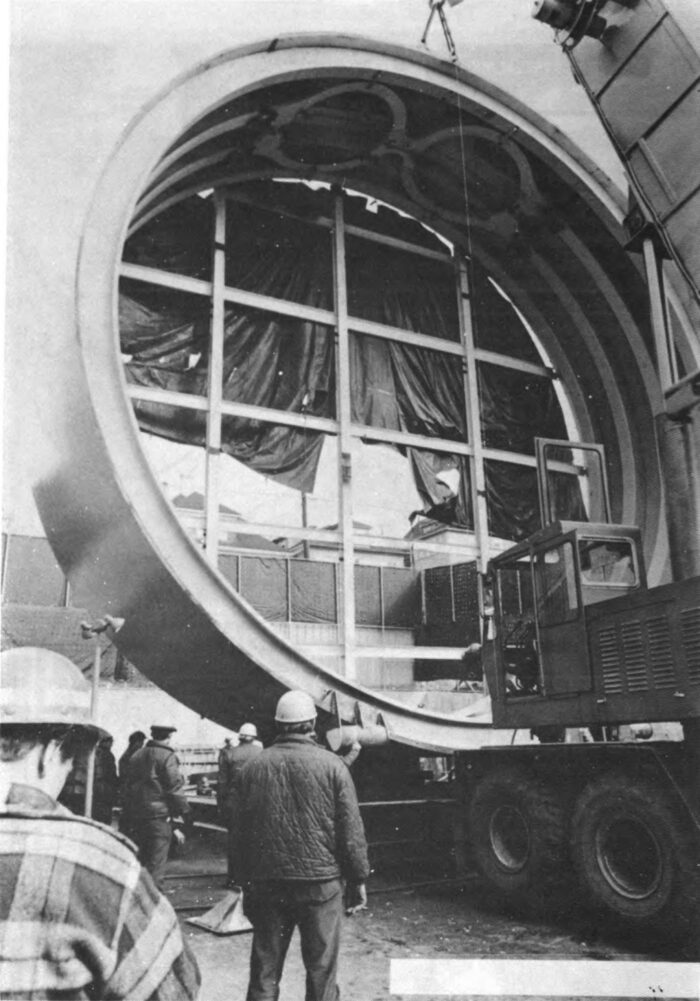
Hull section being lifted for assembly
In general the hull was far more “blended” than previous designs, with the classic “hump” now absorbed by the forward hull section. Its tail still protrudes well after of the nuclear compartment towards the tail. Still, the absence of shoulders make it less likely toproduced any disturbances. The “hump” still protruded abone the pressure hull, and the transition is marked by a long line of water scoops to the ballasts at its base. Internally, the space taken by the missile tuves and the size of the sonar bay leaved a small section forward, under the sail, for living quarters on five full decks. The torpedo compartment is located in the second deck with utility space, batteries and storage (1st aux. machinery space) located on the 1st deck. The living quarters, for the sailors and officers, facilities are on the 3rd and 4th deck and the control space and CC are just under the sail with separations, and the conning tower mid-way.
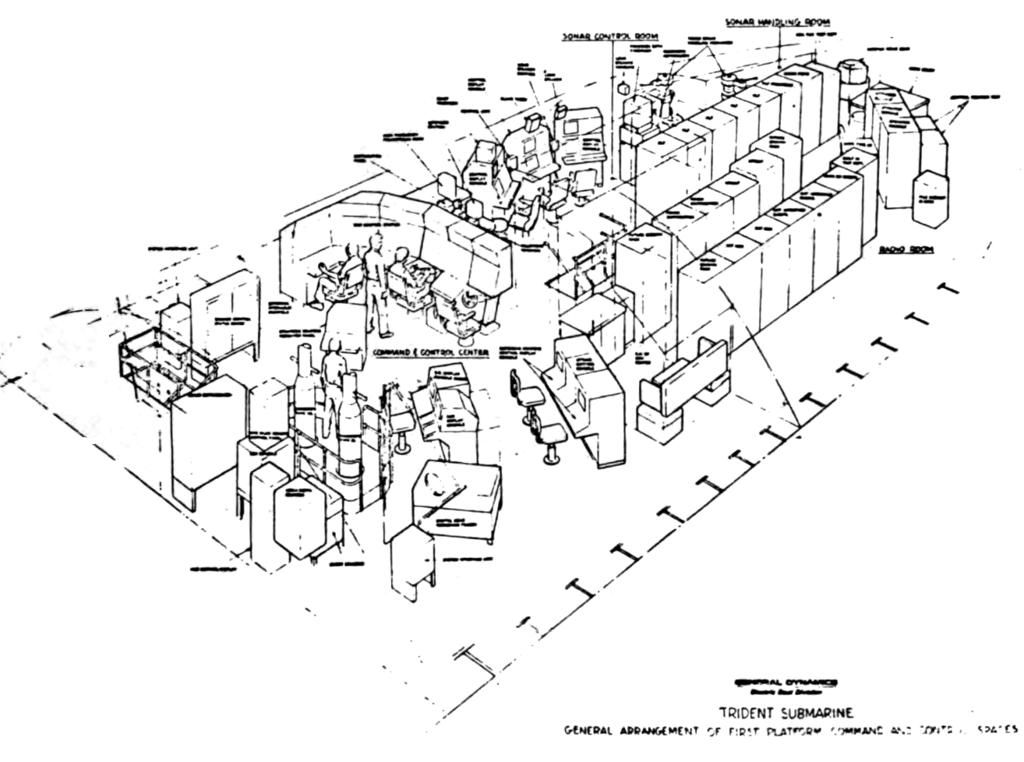
General arrangement of the command deck.
The command deck is separated between the Computer room, Integrated radio room, Sonar room, Command and control center, Navigation center, and Missile control center, with around 50 rotating operators for a constant presence. About 1/3 of the whole lenght is occupied by engineering spaces, with a short section with the main auxiliary powerplant, the reactor compartment, and main engine room.
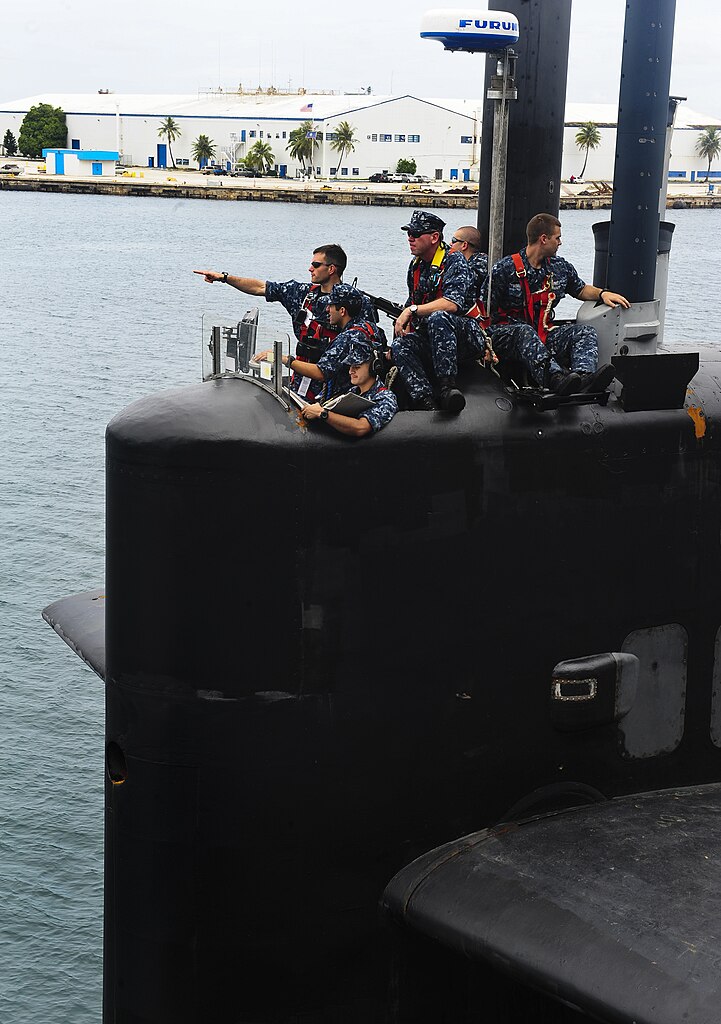
Details of the sail, USS Michigan
Powerplant
Abeit at first two reactors were precognised, the Ohio class was eventually fitted with a single, but much larger S8G PWR nuclear reactor. This was a natural flow reactor, so to eleminate the noisy pumps. It was coupled with two General Eletric geared turbines rated for 35,000 shp (26 MW). As a backup there was a single Fairbanks Morse auxiliary diesel and a 325 hp (242 kW) auxiliary motor. The first was to rprovide energy to all systems when the sub had its reactor cold. The second was a guarantee to at least activate the ballasts pumps. The shaft was driving a new seven-bladed screw, which shape was further refined compared to previous designs. It should be noted that at that stage, new British subs adopted the pump jet, or shrouded propeller. This was not adopted before the latter batches and the Seawolf class.
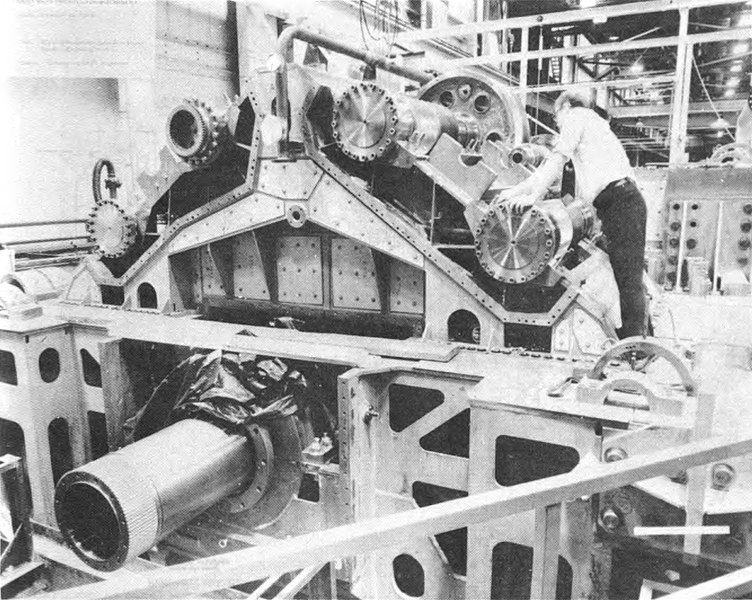
Propulsion turbine’s final assembly at GE West Lynn plant.
S8G PWR nuclear reactor
The S8G reactor designation stands for:
S = Submarine platform; 8 = Eighth generation core designed by the contractor; G = General Electric was the contracted designer instead of Westinghouse.
The S8G reactor was designed by General Electric for the new Ohio-class submarines and was able to produce a gargantuan 220 MWth compared to 11 MW for the previous boat’s S5W. The S8G reactor compartment was 42 feet (13 m) in diameter, 55 feet (17 m) long, weighing 2,750 tons alone. This was the largest ever fitted on an US submarine.
What GM used to convince the Navy was its concept of a natural circulation which enable to reach a significant fraction of full power without coolant pumps which were a source of noise. It enabled a speed of 20 knots in such a way. The land-based prototype was built at Knolls Atomic Power Laboratory’s Kesselring Site in West Milton (New York). It remained in use for testing and crew training until the laye 1980s and from 1994, the core was replaced with an S6W reactor, same as for the Seawolf-class submarine, and repted with a longer life and allowing discreet operations at even greater speeds. All S8G came out with a new safety feature, an automatic reactor fill system. It could flood the reactor with borated water in case of loss-of-coolant accident (notably due to leakages and busting pipes after an external schock).
Performances
The Ohio class were capable of 12 knots (22 km/h; 14 mph) while surfaced, 20 knots (37 km/h; 23 mph) submerged as official figure and beyong 25 knots (46 km/h; 29 mph) submerged as reported but with colling pumpas activated.
The Range remains unlimited except for food supplies for a crew of 150+ at sea for up to 90 days (3 months). Another safety feature was the capacity of these submarines to dive well below 800 ft (240 m) as official test depth. Crushing depht is probably well beyond 1,200 ft (500 m).
Armament
Basic Armament comprises four 21 inch (533 mm) Mark 48 torpedo tubes behind the sonar sets. The tubes are slightly angled outwards and staggered. From SSBN-726 to SSBN-733 until refueling they all carried twenty Trident I C4 SLBM with up to 8 MIRVs. Each was rated for 100 kt as TNT W76 nuclear warheads for a range of 4,000 nmi (7,400 km; 4,600 mi).
Second batch, from SSBN-734 and SSBN-730 to SSBN-733 after refueling had the same TTs but twenty Trident II D5 SLBM (up to 12 MIRV, W76 or W88 (475 ktTNT) warheads each range 6,100 nmi (11,300 km; 7,000 mi).
SSGN conversion boats had 22 tubes, each with 7 Tomahawk cruise missiles for 154 total. This is far more than a Charlie or an Oscar, but the Tomahawk is much smaller than the legacy Soviet systems. For the frst time, the USN had a capable SSGN strike force than can operate a saturation strike unnanounced at any point on the globe, an essential part of the “conventional deterrence”. Tomahawks could also received a small nuclear tactical warheads in wartime, so to cripple a task force.
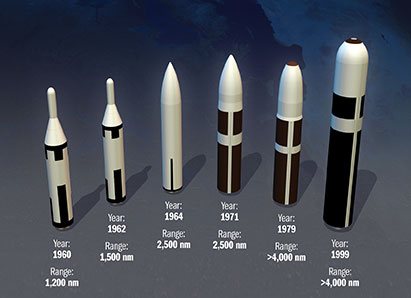
The first batch was armed with the Trident I, 24 instead of 16 missile silos, quite an improvement over the Lafayettes. From the ninth boat, USS Tennessee, all were armed with the larger three-stage Trident II D5 missiles. The Trident I carried eight MIRV (multiple independently targetable reentry vehicles) and Trident II was designed to cary twelve and with longer range and greater accuracy. This made a potential of 288 warheads per Ohio class boat.
There was a new Fire control installed for their new Mark 48 torpedoes, the Mark 118 Mod 2 system and the Trident Missile Fire Control system installed was the Mark 98.
From Alaska in 2000, conversions started to convert remaining boats to the D5 missile standard, completed in mid-2008. The first eight were based at Bangor, Washington, replacing older Polaris A3 carriers being decommissioned (such as the Washington/Ethan Allen class). The remaining then were home ported at Kings Bay in Georgia, and replaced Poseidon and Trident Backfit Atlantic Fleet Lafayettes. In the end, instead of the “41 for freedom” the 2000 strategic fleet was to ansure the same work with just 16 hulls. Given the usual consideration of transit, refits, overhauls or regular maintenance, it ensures that 50% or eight of them would be always somewhere at sea, ready for launch. This was still much more than the Russian Fleet, which still operated at the time a pair of Typhoons, and seven Delta IV (on paper, as BS-64 was overhauled).
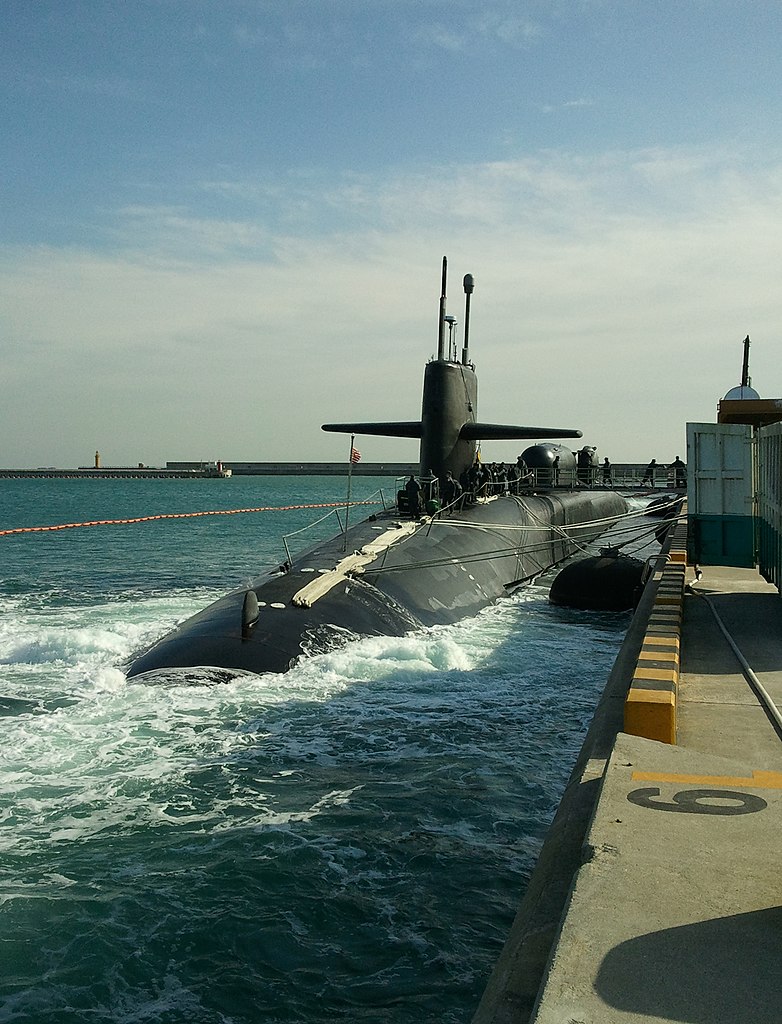
USS Michigan arrives at Busan, about to dock.
Trident I SLBMs
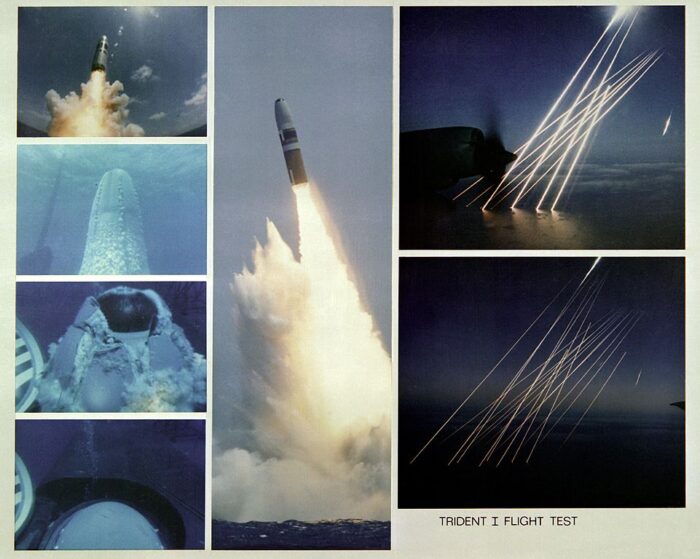
The Trident I was introduced for the ohio class but also retrofitted for the Jamese Madison class, second group of the Lafayettes. These were the first modified to fire and operate the Trident missile alongside the first batch of Ohio class boats. Lockheed commenced work on the TRIDENT I (C4) as a program from November 1973, with an entry service planned for 1979 for the new Ohio-Class authorized in 1974. Madison and Franklin were the first to have these under the Extended Refit Program (ERP) in mid-1976 aso as USS Ohio entered service.
In 1971, studies for the Undersea Long-range Missile System (ULMS) concept led to the Decision Coordinating Paper (DCP) being approved on 14 September, for a long-term modernization plan and a longer-range missile termed ULMS II, with twice the range of the Poseidon (ULMS I). The other end of the program was its carrier, a much larger submarine to replace the Lafayette, Madison and Franklin-classes starting in 1978. The ULMS II was also designed to be retrofitted to existing SSBNs and the preimary payload of the future Ohio-class submarine.
In May 1972, the provisory term ULMS II was replaced by “Trident” to keep the tradition with ancient gods (as Neptune’s famous weapon). It was to have range capacity beyond 6,000 miles (9,700 km).
To put this into prespective, it could allow a SSBN in home waters off New England to fire any point west of the Ural on the Soviet territory, or from Attus island waters (Aleutian), any point on the Soviet territory with room to spare. The final Trident I however was capable of 4,600 nm which still allow to reach any point of the globe from international waters.
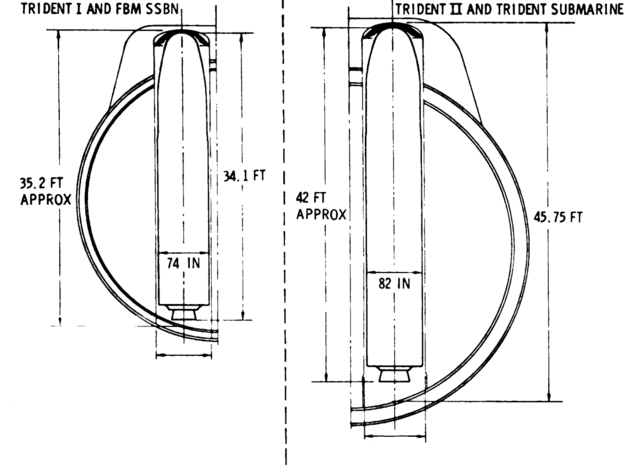
Growth potential: Trident I in a Madison/Franklin hull (left) and in an Ohio hull (right) with the longer Trident II.
The first test of the Trident was filmed on January 18, 1977 with an unarmed missile launched from Cape Canaveral, Florida, travelling 4,600 miles (7,400 km), into the set point in the South Atlantic Ocean, near Ascension Island. The Trident I (C4) was first deployed in 1979, and retired in 2005. It was as fast as the Poseidon (C3) but with extended range. Next the Trident II (D5) was tasked to reduce its CEP, or accuracy, first deployed at the end of the cold war, in 1990 for a service planned until 2027. Tridents were also delivered to UK under the terms of the 1963 Polaris Sales Agreement, modified in 1982 for Trident. Total cost of program went up to $39.546 billion in 2011, $70 million per missile. More to come with the Ohio class.
⚙ specifications UGM-96A Trident I |
|
| Weight | 73,066 pounds (33,142 kg) |
| Dimensions | 33 feet (10.2 m) x 71 inches (1.8 m) |
| Propulsion | 2-stage solid-fuel rocket, thrust vectoring |
| Speed | 20,000 ft/s (6,000 m/s), 13,600 mph (21,600 km/h) or Mach 18 terminal phase |
| Range | 4,600 nautical miles (7,400 km) with 8 W76 (100 kt) MIRV |
| Guidance | Auto-inertial |
| Accuracy | 229-500m CEP |
| Payload | 8 W79 warheads 100 kt each |
Trident II SLBMs
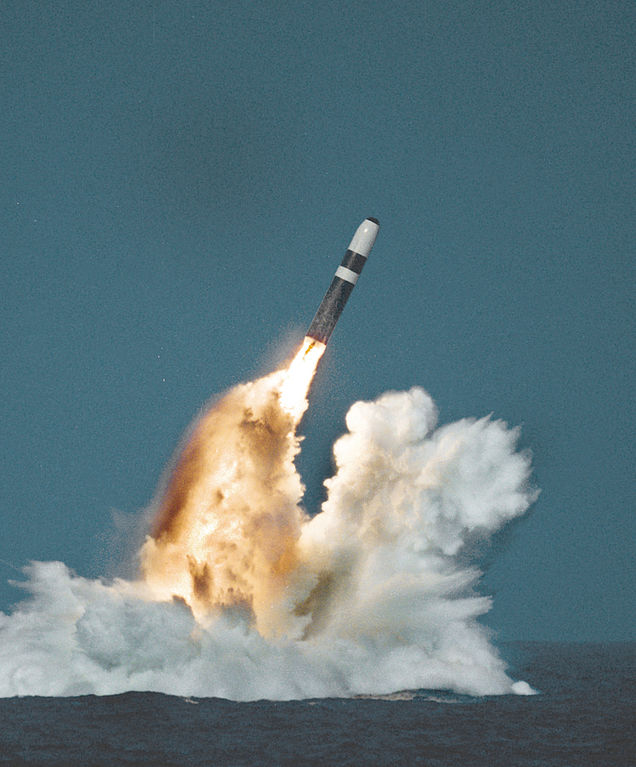
The UGM-133A Trident II, or Trident D5 is an SLBM from Lockheed Martin Space, Sunnyvale (CA), deployed with the US on the Ohio class and the Royal Navy with the Vanguard class. First deployed in March 1990, still in service. The Trident II was developed for greater accuracy, payload, and rang and now a key element of the U.S. strategic nuclear triad. This is a durable system capable of engaging many targets with a 12-strong max MIRV payload. But many more than the W76 and W88 can be carried. A wire range of conventional MIRVs, notably with submunitions were developed in case of a co,ventional use, abeit the missile proce made it less relevant. This however gave them great flexibility accoridng to START treaties. The Trident II also provides an efficient deterrence with fewer submarines, compounded with high accuracy, close to land-based missiles. It is usable for a first strike unlike previous SLBMs.
The number of missiles on Ohio-class was reduced to 20 by 2017, with four extra tubes permanently sealed (apart in wartime). This in compliance with the New Strategic Arms Reduction Treaty. The Ohio class performed no less than 177 successful test flights of the D5 from 1989, most recent from USS Maine (SSBN-741) in February 2020. 10 of these were failures, most recent from HMS Vanguard off the coast of Florida by January 2024. The current upgrade program is called Trident D5LE (life-extension) ensuring it will remain in service until 2042 and arm both US and UK 3rd gen SSBN in development (Columbia and Dreadnought).
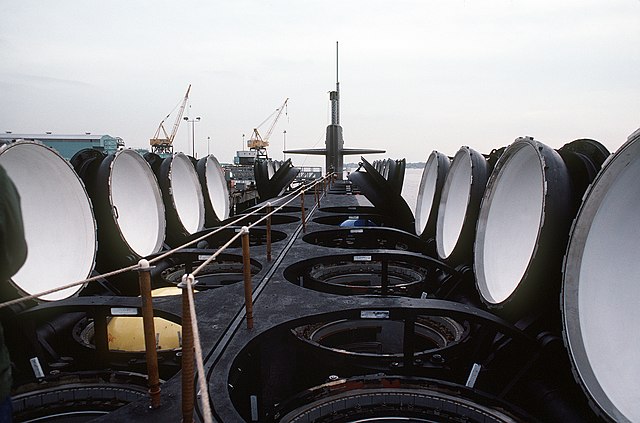
Technically, the D5 is a three solid-fuel rocket motor with a first & second stage using a Thiokol/Hercules solid-fueled rocket and a third stage made by United Technologies Corp., all solid-fueled with a NEPE-75 base propellant (Nitrate ester, plasticized polyethylene glycol-bound HMX, Aluminum, ammonium perchlorate).
Operational range is more than 7,500 mi (12,000 km), classified.
Top speed is Approximately 18,030 mph (29,020 km/h) (Mach 24; 8,060 m/s) in terminal phase ensuring no countermeasure is possible.
The Guidance system uses the MK 6 astro-inertial system, with steering by a single movable nozzle actuated by a gas generator for a 100 m accuracy. The missile was tailored for a first strike on Soviet/Russian missile silos.
The payloads are very diverse:
-Up to eight Mk-5 RV/W88 (475 kt)
-Up to 12 Mk-4 RV/W76-0 (100 kt)
-Up to 12 Mk-4A RV/W-76-1 (90 kt)
-Upto 8? Mk-7 RV/W93 with variable yeld
-Up to 12? W76-2 (5–7 kt) tactical, electromagnetic.
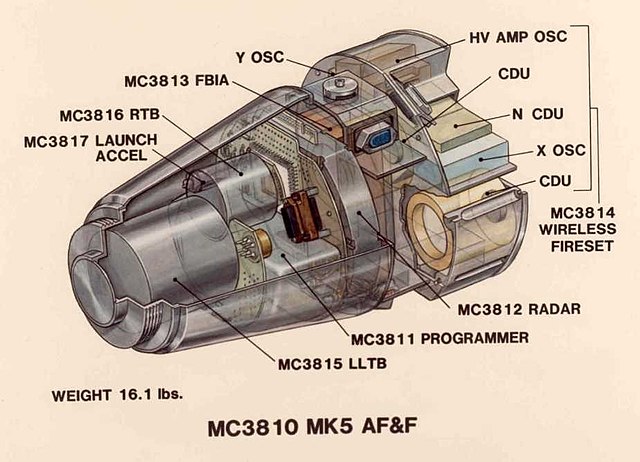
The W88 is the most powerful MIRV in US inventory, made by the Rocky Flats plant for a short period (1988–1989) for c400 in park today. It is a 175-475 kg depending on the model, 60 inches (150 cm) long for 18 inches (46 cm) in diameter. It could have been fired by IJN Yamato’s guns.
475 kilotons of TNT (1,990 TJ) is capable of flattening New York with a light blast damage up to Newark and Elisabeth. Thermal radiation burst, 3° degree burns over c240 km2 src. The W88 was the first to contain Fogbank (Precise nature classified), a foam or aerogel material used in the interstage. See also
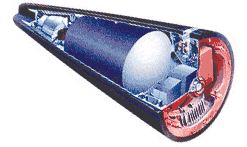 The warhead was initially manufactured from 1978 to 1987, designed by Los Alamos National Laboratory, fitted to the Trident I. After the Rocky Flats plant making the W88 ceased activites in 1989 (400 warheads) it was decided to transfer W76 warheads to Trident II, and a total of c3400 made, the latest being the current W76-2 2018. The later is a low yeld high alt. airburst system, previous ones were contact or low airbust types, 100 kt for thre first 90 kt for the W73-1.
The warhead was initially manufactured from 1978 to 1987, designed by Los Alamos National Laboratory, fitted to the Trident I. After the Rocky Flats plant making the W88 ceased activites in 1989 (400 warheads) it was decided to transfer W76 warheads to Trident II, and a total of c3400 made, the latest being the current W76-2 2018. The later is a low yeld high alt. airburst system, previous ones were contact or low airbust types, 100 kt for thre first 90 kt for the W73-1.
⚙ specifications UGM-133A Trident II |
|
| Weight | 130,000 pounds (59 tons) |
| Dimensions | 44 ft 6.6 in (13.579 m) x 6 ft 11 in (2.11 m) |
| Propulsion | 3-stage solid-fuel rocket, thrust vectoring |
| Speed | 8,060 m/s or 18,030 mph (29,020 km/h) or Mach 24 terminal phase |
| Range | 7,500 nautical miles (12,000 km), classified. |
| Guidance | Auto-inertial |
| Accuracy | 100m CEP |
| Payload | 8-12 warheads 5-475 kt each |
Mark 48 Torpedo Tubes
Unlike the Lafayette, Madison and Franklin which had four Mk 65 tubes for the 1957 Mark 37 torpedoes and Mark 59 (12 torpedoes in reserve), the Ohio class are upgrade with four Mk 48 enabling the use of larger enclapsulated missiles and heavyweight torpedoes. Older models are still usable as well.
Mark 37: Short model 1957, Range 23,000 yards (21 km) at 17 knots, 10,000 yards (9.1 km) at 26 knots.
Mark 45: Long model (1259-76): 2,400 pounds (1,100 kg) for 227 inches (580 cm) x 19 inches (48 cm) with a W34 nuclear warhead (11 kt) optional,
range 5–8 miles (8–13 km), 40 knots or Mod 1 (conventional), 40 kn (74 km/h), 15,000 yd (14 km).
Mark 48: Available from 1972 onwards, intorcicved on the Los Angeles and Ohio classes. Swash-plate piston engine, pump jet with Otto fuel II. 647 lb. (293 kg) WH, depth 800 m (2,600 ft), max speed 55 kn (63 mph; 102 km/h), range 31 miles or 27 nmi max at 40 knots (74 km/h; 46 mph).
The latter was the common model on board most submarines, carrying 10–12 Mark 48 heavy torpedoes non-ADCAP (advanced capability).
Sensors
These SSBNs had a new suite:
-BQQ-6 passive bow-mounted array including the BQS-13 fire control array
-BQR-19 navigation sonar
-TB-16 or BQR-23 towed array (next batch)
-BQR-25 conformal array
-AN/BPS-15J navigation plus early warning air and surface radar
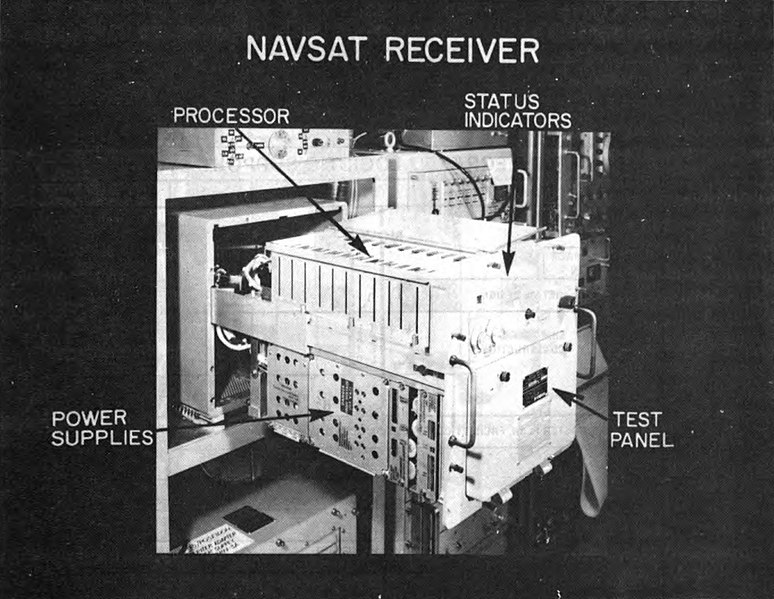
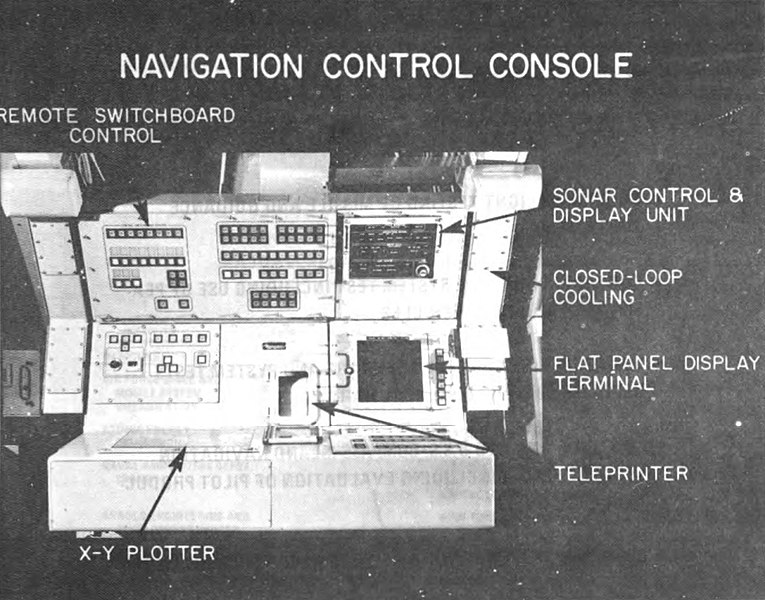
Navigation consoles scheme
BPS-15J radar
The AN/BPS-15J is a medium-range surface search and navigation radar searching in the X-band, class A, also used on the Los Angeles class. The AN/BPS-15J is a backfit replacement for the Ohio class SSGNs, and 11 our of 14 SSBNs, 730-740. Same as the AN/BPS-15H with COTS except the radar cathode tube is replaced by a 20 flat panel display for consolidation of equipment racks. The AN/BQS-13 is a medium-frequency, multi-function sonar array first installed on the Sturgeon-class SSN.
BQQ-6 sonar
Hull-mounted, passive sonar system adopted from the AN/BQQ-5 passive/active sonar system for use with the Mk 118 torpedo fire-control system on board the OHIO class ballistic missile submarines. A very effective self-defense sonar with 944 hydrophone transducers mounted on a sphere and 100 transducers in two flank arrays. Replaced in the OHIO class by an upgraded version at first refuel.
BQR-19 sonar
The “top hat” is an active, short-range, rapid-scanning submarine sonar for collision avoidance, navigation and other special applications, including upward-looking ice detection and mine detection. Mast-mounted, 1,000 pounds (454 kg). Initial operational capability (IOC) was attained in 1970. In service with the OHIO-class, SSBNs like SSGNs.
TB-16 towed sonar
The “flat line” Towed Array consists of a 1400 pound accoustic detector array, some 3.5 inches in diameter and 240 feet long, towed on a 2,400 foot long cable 0.37 inches in diameter weighing 450 pounds.
BQR-23A Towed sonar
Development started in 1974. Provides at least 64 simultaneous Low-Frequency Analysis and Recording (LOFAR) channels in real time. The AN/BQR-23A, introduced bearing-interpolation trackers which smoothed bearing data, improving accuracy of target detection and tracking.
BQR-25 Conformal Array
No data yet.
Appearance

USS SSBN 726 Ohio as completed in 1976. Note the classic red hull under, black dome and upper surfaces of the 1970s livery.

SSGN-726, SALT II conversion of the same USS Ohio, now in the 2000s with her all dark grey livery. The use of echo-proofing tiles also imposes that color all over.
There are still markings on the hull, notably traditional white water level measurements (in feet), two aft of the nose, close to the sail and another pair close to the tail, with some on the top tudder. There were also two large main salvage hatches markings. These are to help DSRVs to find their mark. There are also more discreet markings to indicate the service hatches. As customary, the periscope’s outer casings are camouflaged in the traditional two-tone grey pattern, until changed more recently for a uniform dark blue-green.

Enhanced Mike1979russia’s profile, USS Ohio as SSBN-726 in 1981

Enhanced Mike1979russia’s profile, USS Ohio as SSGN-726 in 2008
⚙ Ohio class spec. |
|
| Displacement | 16,764 tonnes (16,499 long tons) surfaced, 18,750 tonnes (18,450 long tons) submerged |
| Dimensions | 560 x 42 x 35.5 ft (170 x 13 x 10.8m) |
| Propulsion | 1 shaft S8G PWR 2x geared steam turbines (35,000 shp), see notes. |
| Speed | 12 knots (22 km/h; 14 mph) surfaced, 20-25 knots (46 km/h; 29 mph) submerged |
| Range | Unlimited except by food supplies |
| Armament | 16x Trident I C4 SLBM, 4× 21-in (533 mm) TTs Mk.48 (16 torpedoes) |
| Sensors | BQQ-6 bow (+BQS-13FCA), BQR-19 nav., TB-16/BQR-23 towed arra, BQR-25 conf. array, AN/BPS-15J |
| Test depth | +800 ft (240 m) |
| Crew | 2x 155 Blue/Gold (15 officers) |
SSBN/SSGN conversions
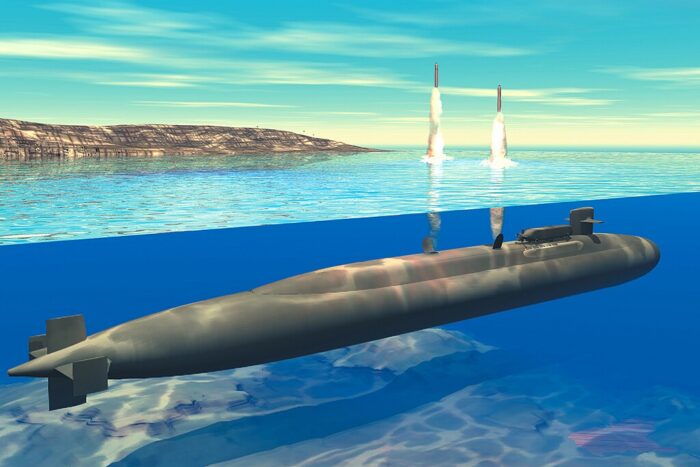
Artist’s impression, Ohio class SSGN launching a Tomahawk.
In 1994, the Nuclear Posture Review study poi,ted at that 18 Ohio SSBNs operating were in fact oversize, 14 would be sufficient for an efficient deterrence. Decision was thus made to convert four Ohio-class into SSGNs. They were designed to fire the Tomahawk, and replaced other popular saturation missile ships concepts or “battlecruisers” to relace the big guns of the Iowa class, definitively decommissioned. The use of these SSGNs would be for conventional land attack and special operations. The four oldest, USS Ohio, Michigan, Florida, and Georgia started that conversion in 2002, until 2008. In all, they could carry a staggering 154 Tomahawk cruise missiles, placed into the former tubes, four be silo due to their diameter. The could also carry 66 special operations personnel and a spec ops submarine as mothership. The cost was US$1 billion in 2008 dollars per vessel.
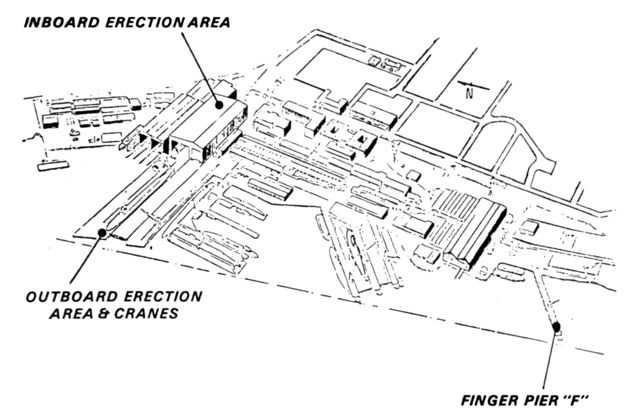
EB’s Groton facility map
In detail, the conversion concerned the transformation of 22 of the 24 88-inch (2.2 m) diameter Trident missile tubes. They were essentially converted as circular VLS. With improvements, each tube could cluster up to seven Tomahawk cruise missiles for a grand total on paper of 154, same as a full surface battle group. Still in the works are the installation of a new generation of supersonic and hypersonic cruise missiles, Intermediate Range Ballistic Missiles or unmanned aerial vehicles as well as the ADM-160 MALD and extra sensors for ASW or intel/recce/surveillance. Another system is the minehunting AN/BLQ-11 Long Term Mine Reconnaissance System. The broaching universal buoyant launcher as specialized payload canister is also optional.
The missile tubes could hold stowage canisters for special forces. The other two Trident tubes in fact are used as swimmer lockout chambers. The Dry Combat Submersible replacing the Advanced SEAL Delivery System is carried close to the sail, or a dry deck shelter mounted on the lockout chamber for up to 66 Navy SEALs or USMC MARSOC. These SSGNs also have improved communications equipment to act as forward clandestine Small Combatant Joint Command Center. The idea is to coordonate multiple spec-ops missions on the ground, in liasion with a White House crisis cell, with optional Tomahawk strike at any moment.
The contract was signed on 26 September 2002 with General Dynamics Electric Boat under US$442.9 million (first phase conversion, first two boats) Next $355 million FY2002, $825 million FY2003 and $936 million FY2004, $505 million FY2005, $170 million FY2006, $700 million per SSG over 36-month between refueling and missile-conversion overhaul. First completed on 9 January 2006, then February 2006, April 2006, November 2006. Ohio as SSGN made her trials in October 2007. They are expected to remain active until 2026 to be replaced by modified Virginia-class boats.
Next: The Columbia class SSBN
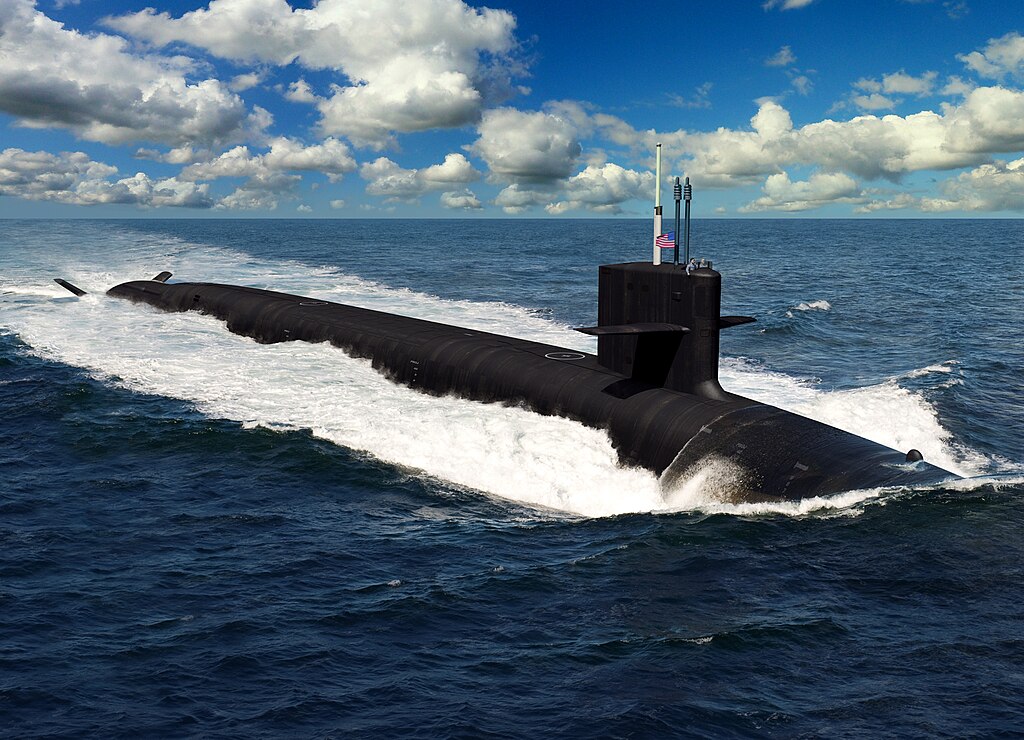

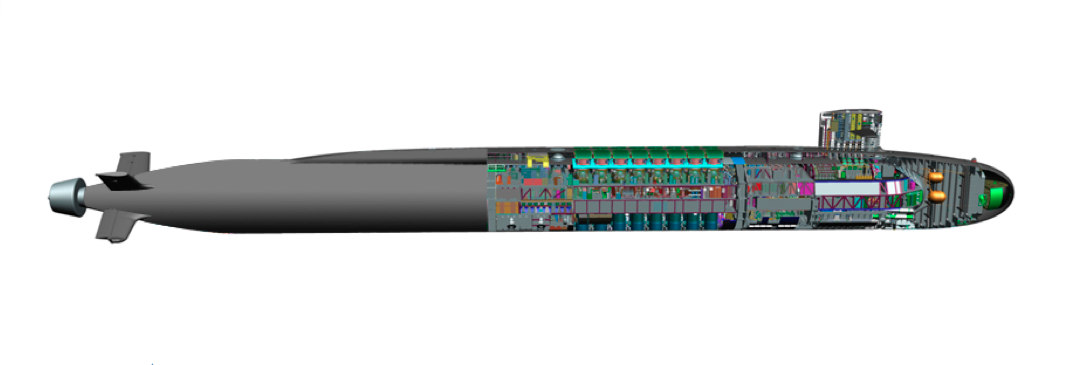
(More to come)
Career of the Ohio class
The first Ohio class were converted into SSGNs. The foirst four are now pending decommission in the following years, pending replacement by the Columbia class.
Five of the remaining submarines (Pennsylvania, Kentucky, Nebraska, Maine, and Louisiana) were transferred from Kings Bay to Bangor and other transfers occur in the new post-cold war context. In 2011, these carried out 28 deterrent patrols, around 70 days each. In 2014 USS Pennsylvania carried out the longest at 140-day.
 USS Ohio SSGN-726
USS Ohio SSGN-726
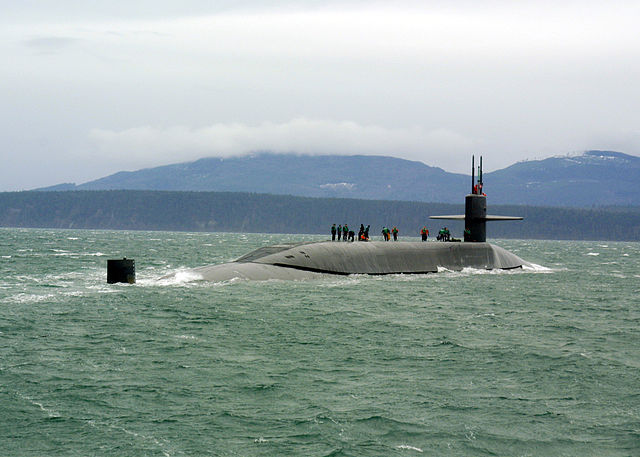
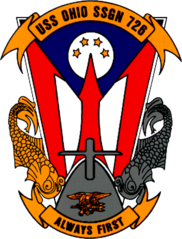 The lead boat was ordered on 1 July 1974, laid down on 10 April 1976, launched on 7 April 1979, and completed on 28 October 1981. She was commissioned on 11 November 1981 and homeported at the Naval Base Kitsap in Washington, west coast. When commissioned the principal speaker, Vice President George H. W. Bush, remarked to the assembled guests that she introduced a “new dimension in our nation’s strategic deterrence”. Admiral Hyman G. Rickover remarked she will “strike fear in the hearts of our enemies.” Blue and Gold crews were assembled later and commanded repsectively by Captain A. K. Thompson and Captain A. F. Campbell.
The lead boat was ordered on 1 July 1974, laid down on 10 April 1976, launched on 7 April 1979, and completed on 28 October 1981. She was commissioned on 11 November 1981 and homeported at the Naval Base Kitsap in Washington, west coast. When commissioned the principal speaker, Vice President George H. W. Bush, remarked to the assembled guests that she introduced a “new dimension in our nation’s strategic deterrence”. Admiral Hyman G. Rickover remarked she will “strike fear in the hearts of our enemies.” Blue and Gold crews were assembled later and commanded repsectively by Captain A. K. Thompson and Captain A. F. Campbell.
After Post Shakedown Availability at Electric Boat she left the Atlantic, transited to Bangor, Washington via Cape Canaveral to test her missile and crossed the canal from 12 August 1982. On August-September 1982, she loaded her Trident C-4 for predeployment refit and first Deterrent Patrol in October 1982. Logs missing.
From June 1993 to June 1994 she was overhauled at Puget Sound in Bremerton and resumed patrols in January 1995 with SubRon 17, SubGroup 9, Pacific Submarine Force. After her conversion as SSGN, she was recom. on 7 February 2006. On 21 January 2007 Gold Crew departed Kitsap for Hawaii for a forward-deployed crew exchange, a first in 20 years. Her first mission as SSGN was on 15 October 2007 (Blue) with tests and inspections and a patrol until December. On 28 June 2010, she took part in an US response to Chinese missile testing in the East China Sea. Ohio, Michigan, and Florida surfaced simultaneously in the Philippines, South Korea, and British Indian Ocean Territory as a gesture.
In November 2011, Lt. Britta Christianson became the first U.S. female officer on board to complete submarine warfare qualification in Gold Crew. CSC Dominique Saavedra became the first enlisted female earning her qualification on Ohio in August 2016. She was redeploy on USS Michigan, first specially modified with separate accommodations. In December 2020, it was announced USS Ohio would be decommissioned by 2026. She was awarded the first-place winner in the Pacific fleet (Blue) before conversion as SSGN. After 43 years and 26 days, in active service, she is still in operation, with pending decommission for 2026. CC photos
 USS Michigan SSGN-727
USS Michigan SSGN-727
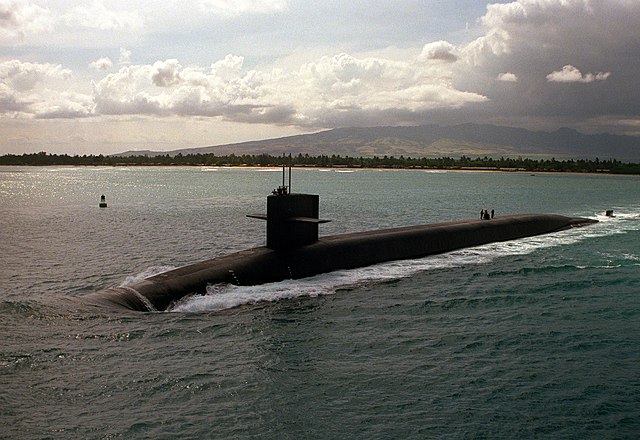
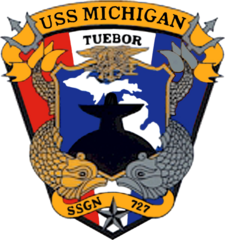 USS Michigan was ordered on 28 February 1975, laid down on 4 April 1977, launched on 26 April 1980, completed on 28 August 1982 and commissioned on 11 September 1982. She sailed to Bangor on 16 March 1983 for the start of 66 Strategic Deterrent Patrols. By June 2007 she had been converted to an SSGN at Puget Sound. On 12 December 2007 she was back at HP Kitsap, for her 1st deployment on 10 November 2008, and several theater security cooperation engagements as part of Ex. Pacific Rim. On 28 June 2010 she ws part of the response to Chinese missile testing in the East China Sea. She surfaced in the waters of South Korea exactly at the same time as her sister in other locations.
USS Michigan was ordered on 28 February 1975, laid down on 4 April 1977, launched on 26 April 1980, completed on 28 August 1982 and commissioned on 11 September 1982. She sailed to Bangor on 16 March 1983 for the start of 66 Strategic Deterrent Patrols. By June 2007 she had been converted to an SSGN at Puget Sound. On 12 December 2007 she was back at HP Kitsap, for her 1st deployment on 10 November 2008, and several theater security cooperation engagements as part of Ex. Pacific Rim. On 28 June 2010 she ws part of the response to Chinese missile testing in the East China Sea. She surfaced in the waters of South Korea exactly at the same time as her sister in other locations.
In August 2016, CSC Dominique Saavedra became her first enlisted female sailor earning submarine qualification serving and Michigan in between had been the first specially modified with separate accommodations.
On 25 April 2017 she docked at Busan Naval Base during tensions with North Korea, joined later the USS Carl Vinson Carrier Strike Group in the Sea of Japan. She returned to Busan on 15 June 2023, after new missile launched on the east coast, to demonstrate US resolve to support and protect South Korea.
She was proposed for a decommission on 2028. Currently in service at Naval Base Kitsap in Washington after 42 years, 2 months and 26 days, more to come.
 Florida SSGN-728
Florida SSGN-728
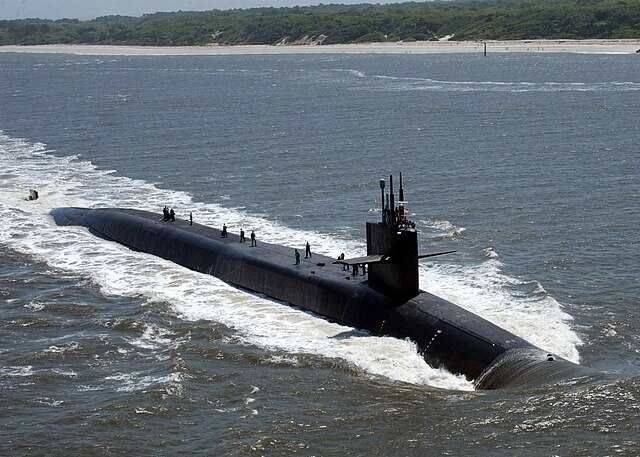
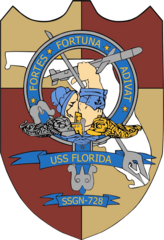 USS Florida was ordered on 28 February 1975, laid down on 19 January 1981, launched on 14 November 1981, completed on 17 May 1983 and commissioned on 18 June 1983 with Captain William L. Powell (Blue) and George R. Sterner (Gold). After shakedown the two crews launch on turn a Trident C-4 and she transited the Panama Canal in February for Bangor, on 25 March 1984, completing her first patrol on 25 July. Missing Logs. By November 2002 she had completed 61 patrols and won Battle E in 1989, 1991, 1994, 1999, and 2002. In 1991 this was the Marjorie Sterrett Battleship Fund Award. She was converted as a SSGN at Norfolk Naval Shipyard in July 2003 with refueling and conversion completed by April 2006. She was homeported in Kings Bay Base, Georgia.
USS Florida was ordered on 28 February 1975, laid down on 19 January 1981, launched on 14 November 1981, completed on 17 May 1983 and commissioned on 18 June 1983 with Captain William L. Powell (Blue) and George R. Sterner (Gold). After shakedown the two crews launch on turn a Trident C-4 and she transited the Panama Canal in February for Bangor, on 25 March 1984, completing her first patrol on 25 July. Missing Logs. By November 2002 she had completed 61 patrols and won Battle E in 1989, 1991, 1994, 1999, and 2002. In 1991 this was the Marjorie Sterrett Battleship Fund Award. She was converted as a SSGN at Norfolk Naval Shipyard in July 2003 with refueling and conversion completed by April 2006. She was homeported in Kings Bay Base, Georgia.
She took part in Operation Odyssey Dawn on 19 March 2011, in conjunction with other US UK warships and submarines, firing Tomahawks at Libyan air defense targets. This freed the skies to British, French, and US air strikes and create a no-fly zone over Libya, first combat action of USS Florida (or any Ohio-class). She launched 93 Tomahawk, 90 effective, out of 160. Assigned to the Med she was the only one available for this operation. This was the largest of such missile strikes.
On 28 June 2010, she responded (see above) to Chinese missile testing in the East China Sea. She sirfaced on the British Indian Ocean Territory. Next she was sent in mission to the Persian Gulf in autumn 2023 (Israel-Hamas war). In April, she transited the Suez Canal into the Red Sea. On 15 February 2013 her crew was awarded the Navy Unit Commendation for Odyssey Dawn in 2011. She was proposed for a decommission on 2026. Still active, HP Naval Submarine Base Kings Bay, so far 41 years, 5 months and 19 days.
 Georgia SSGN-729
Georgia SSGN-729
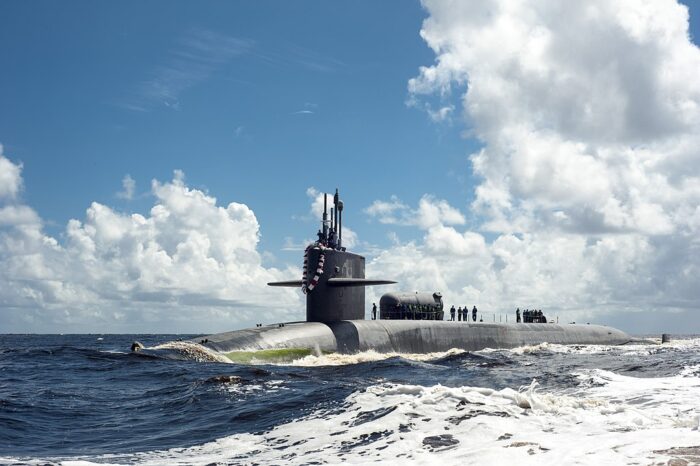
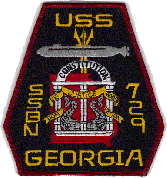 USS Georgia was ordered on 20 February 1976, laid down on 7 April 1979, launched on 6 November 1982 and completed on 17 January 1984, and commissioned on 11 February 1984 with Captain A. W. Kuester (Blue) and Captain M. P. Gray (Gold). From March to April 1984 she ahd a shakedown and testing launches of Trident C-4 at the Eastern Test Range, 7 April 1984. In November 1984, she was homeported to Bangor, Washington. In January 1985 she started her first patrol. She took part in TU 14.7.1 from September 1983 to May 1986 (One Meritorious Unit Commendation) and another for February 1986 to August 1986.
USS Georgia was ordered on 20 February 1976, laid down on 7 April 1979, launched on 6 November 1982 and completed on 17 January 1984, and commissioned on 11 February 1984 with Captain A. W. Kuester (Blue) and Captain M. P. Gray (Gold). From March to April 1984 she ahd a shakedown and testing launches of Trident C-4 at the Eastern Test Range, 7 April 1984. In November 1984, she was homeported to Bangor, Washington. In January 1985 she started her first patrol. She took part in TU 14.7.1 from September 1983 to May 1986 (One Meritorious Unit Commendation) and another for February 1986 to August 1986.
On 22 March 1986, 3 miles south of Midway the harbor tug USS Secota (YTM-415) just completed a personnel transfer from USS Georgia when she lost power and ended on the starboard stern plane as her propeller still turned, breaking the tug in second and she sank. Ten were rescued but went down, trapped in her engine room. The sub still had repairs for minor damage. Gold crew was awarded the Comsubron 17 Battle Efficiency Award in 2001. On 30 October 2003 she completed her last, 65th deterrent patrol. On 7 November 2003 while docked at Bangor, she had her C-4 Trident I offloaded until was unloaded the number 16 with a ladder lowered into the tube for a sailor to attach a hoist to lift the missile. But crew took a break without removing the ladder and wehn back to hoist the missile, they pulled against the ladder and ending making a 230 mm hole in its nose cone. 3 men were court-martialled and SWFPAC Captain Keith Lyles was relieved of command as well as XO Commander Phillip Jackson and weapons officers Commander Marshall Millett, Master Chief Petty Officer, Command Steven Perry. She became a SSGN on 1 March 2004 and took part in Exercise Silent Hammer. In March 2005 she entered Norfolk for scheduled Engineered Refueling Overhaul and her SSGN conversion took place, completed in February 2008. She moved to Kings Bay in Georgia with her converted sisters, recom. on 28 March 2008. In August 2009 she was the first deployed, and in January 2010, earned SubRon 16 Battle “E” for 2009 and Engineering Red “E”, Nav. Red-Green “N”.
In December 2010 a bolt left in her reduction gears caused $2.2 million in damage, three months of repairs. One officer and several sailors were disciplined.
On 25 November 2015, she struck a channel buoy and was grounded when entering Kings Bay. She was drydocked for inspection and repairs ($1 million). The CO, Blue crew Captain David Adams was relieved of duty on 4 January 2016. While docked in Gibraltar in April 2022 she received an official protest from the Spanish Foreign Ministry. In August 2024 she was ordered by US Def.Sec. Lloyd Austin from the Mediterranean to the Middle East as deterrent against an anticipated Iranian attack on Israel. She was proposed for decommission on 2028 and is today HP at the Naval Submarine Base Kings Bay, Georgia, 40 years+ and more to come.
 USS Henry M. Jackson (ex Rhode Island) SSBN-730
USS Henry M. Jackson (ex Rhode Island) SSBN-730
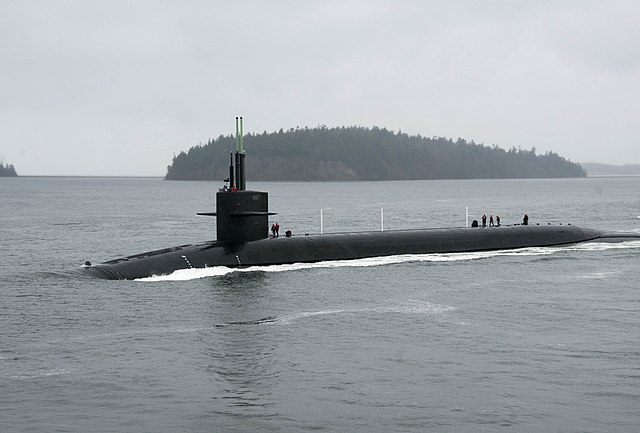
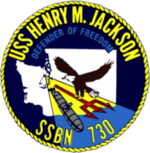 Ordered as USS Rhode Island on 6 June 1977, Henry M. Jackson renamed before launch, shortly after Senator Jackson suddenly died in office on 1 September 1983. She became the only celebrity among state-named subs. She had been originally laid down on 19 November 1981, launched on 15 October 1983, completed 11 September 1984, commissioned on 6 October 1984. Her named was transferred to SSBN-740. Since 1990, “Defender of Freedom” was assigned patrolling of the Center and Middle Pacific. On May 15, 2012 she became the first of her class to complete 80 strategic deterrent patrols.
Ordered as USS Rhode Island on 6 June 1977, Henry M. Jackson renamed before launch, shortly after Senator Jackson suddenly died in office on 1 September 1983. She became the only celebrity among state-named subs. She had been originally laid down on 19 November 1981, launched on 15 October 1983, completed 11 September 1984, commissioned on 6 October 1984. Her named was transferred to SSBN-740. Since 1990, “Defender of Freedom” was assigned patrolling of the Center and Middle Pacific. On May 15, 2012 she became the first of her class to complete 80 strategic deterrent patrols.
She was awarded the 2020 Battle “E” for SubRon 17. Blue crew was awarded the 2020 Hugh McCracken award (“Best CPO Mess”) and the sub was given the 2020 Omaha Trophy in to USSTRATCOM mission. She was proposed for a decommission in 2027 but today she is active at Naval Base Kitsap, Washington after 40 years+ service.
 USS Alabama SSBN-731
USS Alabama SSBN-731
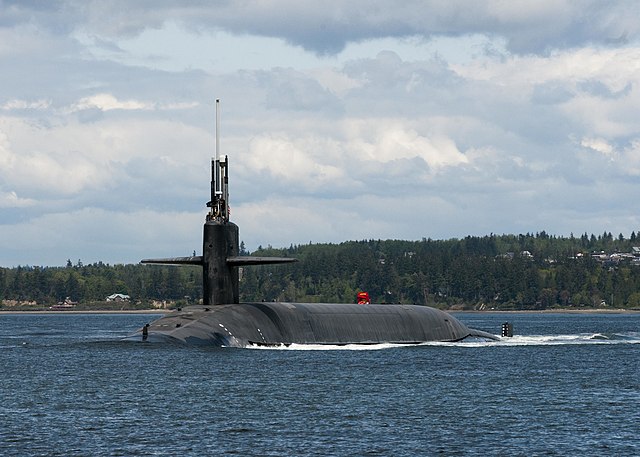
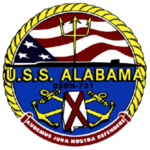 USS Alabama SSBN-731 was ordered on 27 February 1978, laid down on 27 August 1981, launched on 19 May 1984 and completed on 23 April 1985, commissioned on 25 May 1985. After commission she left the Connecticut for a shakedown off Florida. She later visited Mobile and sailed for Panama, then Bangor. 1st patrol started by mid-May 1986, on the Pacific Northwest. 4 patrols between June and December 1986. In May 1988 she test fired her first two missiles C4. On 1 September she moored at Bangor after her 9th patrol (100th trident patrol) greeted on arrival by the Undersecretary of the Navy H. Lawrence Garrett III. In August 1989 she launched four Trident C4. Her patrol areas in the Pacific included port calls at Seattle, San Diego, Long Beach, Pearl Harbor.
USS Alabama SSBN-731 was ordered on 27 February 1978, laid down on 27 August 1981, launched on 19 May 1984 and completed on 23 April 1985, commissioned on 25 May 1985. After commission she left the Connecticut for a shakedown off Florida. She later visited Mobile and sailed for Panama, then Bangor. 1st patrol started by mid-May 1986, on the Pacific Northwest. 4 patrols between June and December 1986. In May 1988 she test fired her first two missiles C4. On 1 September she moored at Bangor after her 9th patrol (100th trident patrol) greeted on arrival by the Undersecretary of the Navy H. Lawrence Garrett III. In August 1989 she launched four Trident C4. Her patrol areas in the Pacific included port calls at Seattle, San Diego, Long Beach, Pearl Harbor.
In February 1991 she was selected by CINCPACFLT in Pearl Harbor and in August 1992, embarked the CiC, Strategic Command (CINCSTRATCOM) and senior U.S. Air Force and Navy Officers staff for a submerged tour and discuss about operations. In January 1996 she won the Battle “E” and Strategic Ops “S” by SubRon 17 command. In March she earned the Omaha Trophy for ballistic missile excellence. In March 1999, she was seen in exercises with USS Constellation (CV-64) CBG and in September worked for the Defense Advisory Counsel on Women in Services.
After 47 patrols, USS Alabama had her major refit in 1999. In the spring 2000, she had 50th patrol after exercises with CBG Abraham Lincoln (CVN-72), making a VIP cruise in Dabob Bay (Washington) while hosting the Chief of Defense of Japan and staff. In August she retruned with USS Abraham Lincoln CBG.
She was in Bremerton Annex, Kitsap, Bangor for refueling overhaul, conversion to Trident II D5, last of the class to be so by February 2009.
In April 2014 she joined SubRon 9 at Bangor and won Battle “E” for 2016 and 2017. She was proposed for a decommission in 2028, and is now active at the Naval Base Kitsap in Washington (40 Yrs service).
 Alaska SSBN-732
Alaska SSBN-732
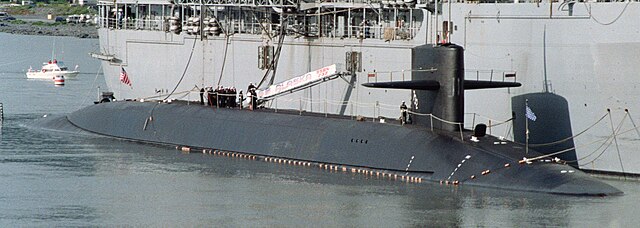
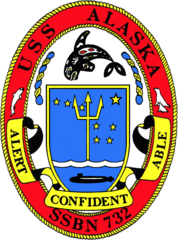 SSBN-732 was ordered on 27 February 1978, laid down on 9 March 1983, launched on 12 January 1985, and completed on 26 November 1985, commissioned on 25 January 1986 with Captain Paul L. Callahan (Blue) and Captain Charles J. Chotvacs (Gold). In 1986 she had a shakedown training and training from New London and Port Canaveral, before sailing for the Pacific Northwest from 4 September to 1 October 1986 via Panama and San Francisco, entering SubRon 17, SubGroup 9 at Bangor. She sailed for her 1st patorl (Blue) on 7 December 1986, to 19 February 1987. Gold took over from 16 March to 28 May. After many more, she had her major engineering overhaul at Puget Sound from 1 May 2000 to 9 December 2001, with Trident II D5 “backfit” and Mk 48 ADCAP torpedo.
SSBN-732 was ordered on 27 February 1978, laid down on 9 March 1983, launched on 12 January 1985, and completed on 26 November 1985, commissioned on 25 January 1986 with Captain Paul L. Callahan (Blue) and Captain Charles J. Chotvacs (Gold). In 1986 she had a shakedown training and training from New London and Port Canaveral, before sailing for the Pacific Northwest from 4 September to 1 October 1986 via Panama and San Francisco, entering SubRon 17, SubGroup 9 at Bangor. She sailed for her 1st patorl (Blue) on 7 December 1986, to 19 February 1987. Gold took over from 16 March to 28 May. After many more, she had her major engineering overhaul at Puget Sound from 1 May 2000 to 9 December 2001, with Trident II D5 “backfit” and Mk 48 ADCAP torpedo.
Whe resuming patrols she had 47 Trident I C4 and 12 Trident II D5 until 8 July 2006. The overhaul took 27½-month until 8 March 2009. She was reassigned to SubRon 20, SubGroup 10 in Kings Bay, Georgia from May 2009 and 28 April 2010, the Navy announced the conversion of her living spaces to accommodate female crewmembers. She was awarded a Battle “E” for 2004, 2011, 2012, 2014, 2016, 2018, 2019, and 2021 and USSTRATCOM Omaha Trophy for 2005, 2011, 2012, 2014, 2016, 2019 and 2021. She also earned the Meritorious Unit Commendation for Oct. 2011 to Dec. 2013 and from 2016 to 2018 as well as the 2014 Battenberg Cup (best ship/submarine in the Atlantic fleet), the first ballistic missile awarded this praized award. No decommission date planned, Currently active at the naval submarine Base Kings Bay, Georgia 39 years service already.
 USS Nevada SSBN-733
USS Nevada SSBN-733
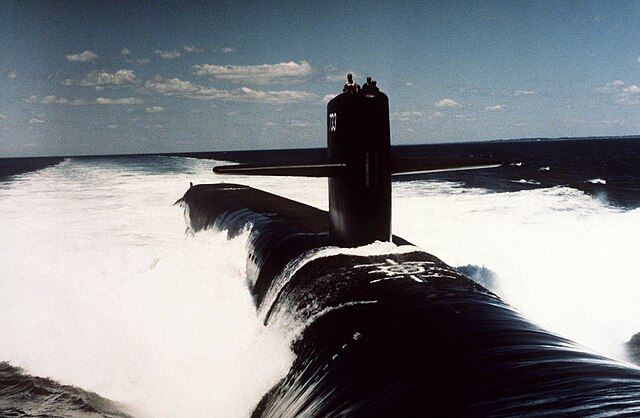
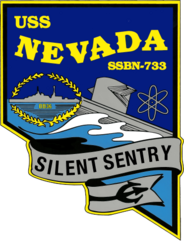 SSBN-733 was ordered on 7 January 1981, laid down on 8 August 1983, launched on 14 September 1985, completed on 7 August 1986, commissioned on 16 August 1986. She retake the name of a famous battleship, badly hit and assumed sunk by the Japanese at Pearl harbour and resurrected, completely refitted, for 1944-45 operations. She is fatured as a silhouette on her badge. Her modern namesake started service with Captain F.W. Rohm (Blue) and William Stone (Gold). On 1–2 August 2006 while in the Strait of Juan de Fuca she snagged and broke the 500-foot towline with the tug Phyllis Dunlap and a barge, and had fiberglass portions of her sail damaged by the drifting barge. In 2005 and 2006, 2018, her crew was awarded the Battle “E”. In February 2008 she entered Puget Sound for her planned long Engineering Refueling Overhaul over 30 months until 21 July 2010 followed by workups and sea trials. She was was awarded the 2018 Omaha Trophy on 21 August 2019 for high standards of performance. Today she is based at Kitsap, with 38+ years in active service, more to come.
SSBN-733 was ordered on 7 January 1981, laid down on 8 August 1983, launched on 14 September 1985, completed on 7 August 1986, commissioned on 16 August 1986. She retake the name of a famous battleship, badly hit and assumed sunk by the Japanese at Pearl harbour and resurrected, completely refitted, for 1944-45 operations. She is fatured as a silhouette on her badge. Her modern namesake started service with Captain F.W. Rohm (Blue) and William Stone (Gold). On 1–2 August 2006 while in the Strait of Juan de Fuca she snagged and broke the 500-foot towline with the tug Phyllis Dunlap and a barge, and had fiberglass portions of her sail damaged by the drifting barge. In 2005 and 2006, 2018, her crew was awarded the Battle “E”. In February 2008 she entered Puget Sound for her planned long Engineering Refueling Overhaul over 30 months until 21 July 2010 followed by workups and sea trials. She was was awarded the 2018 Omaha Trophy on 21 August 2019 for high standards of performance. Today she is based at Kitsap, with 38+ years in active service, more to come.
 USS Tennessee SSBN-734
USS Tennessee SSBN-734
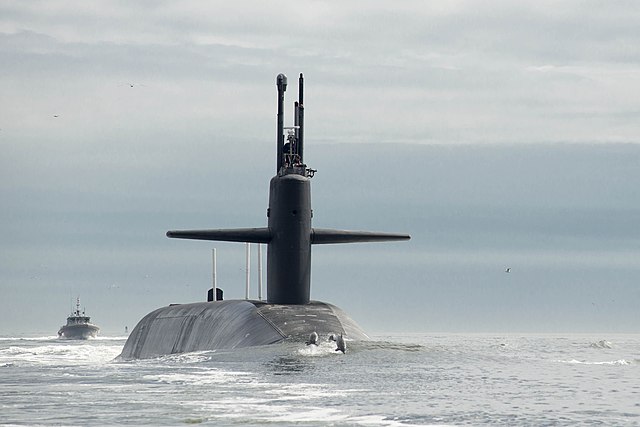
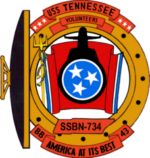 SSBN-734 was ordered on 7 January 1982, laid down on 9 June 1986, launched on 13 December 1986, completed on 18 November 1988, commissioned on 17 December 1988 with Captain Dennis Witzenburg (Blue) and Captain Kenneth D. Barker (Gold). She became the first Ohio-class launching the Trident II, on 21 March 1989, off Cape Canaveral, submerged. The D5 failed four seconds into the flight. This was fixed with simple changes and a successful launched was completed on 2 August 1989 (Gold Crew). In 2021, she was drydocked for her major overhaul at TRF Kings Bay and by December 2022, made a refresher training exercise in the Atlantic with HMS Victorious (S29). US European Command Cdr, General Christopher G. Cavoli was on board on July 2023 with SubForce Atlantic Cdr William J. Houston for a formal tour by the crew. In July 2023 USS Tennessee visited HMNB Clyde, Scotland when USS Kentucky (SSBN-737) entered the Busan Naval Base in South Korea simultaneously as a show of force. In July 2024 USS Tennessee returned to HMNB Clyde after Norwegian Sea Ops with USS Normandy (CG-60) and boarded Commodore Trond Gimmingsrud for a demonstration. She was escorte by HMS Northumberland (F238) in Clyde base. She earned a Battle E for 2023. Today she is stationed at Naval Submarine Base Kings Bay in Georgia, stil active after 35+ years service.
SSBN-734 was ordered on 7 January 1982, laid down on 9 June 1986, launched on 13 December 1986, completed on 18 November 1988, commissioned on 17 December 1988 with Captain Dennis Witzenburg (Blue) and Captain Kenneth D. Barker (Gold). She became the first Ohio-class launching the Trident II, on 21 March 1989, off Cape Canaveral, submerged. The D5 failed four seconds into the flight. This was fixed with simple changes and a successful launched was completed on 2 August 1989 (Gold Crew). In 2021, she was drydocked for her major overhaul at TRF Kings Bay and by December 2022, made a refresher training exercise in the Atlantic with HMS Victorious (S29). US European Command Cdr, General Christopher G. Cavoli was on board on July 2023 with SubForce Atlantic Cdr William J. Houston for a formal tour by the crew. In July 2023 USS Tennessee visited HMNB Clyde, Scotland when USS Kentucky (SSBN-737) entered the Busan Naval Base in South Korea simultaneously as a show of force. In July 2024 USS Tennessee returned to HMNB Clyde after Norwegian Sea Ops with USS Normandy (CG-60) and boarded Commodore Trond Gimmingsrud for a demonstration. She was escorte by HMS Northumberland (F238) in Clyde base. She earned a Battle E for 2023. Today she is stationed at Naval Submarine Base Kings Bay in Georgia, stil active after 35+ years service.
 USS Pennsylvania SSBN-735
USS Pennsylvania SSBN-735
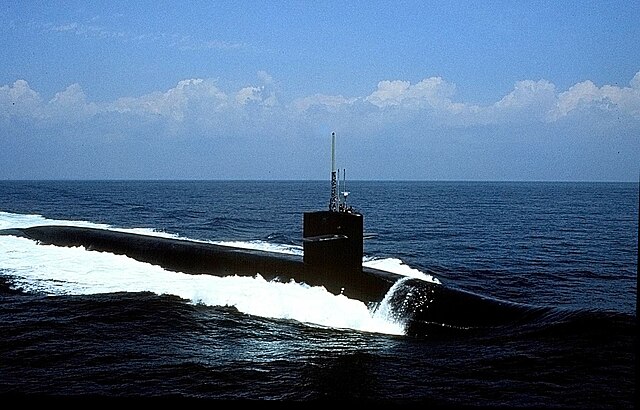
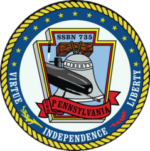 SSBN-735 was ordered on 29 November 1982, laid down on 2 March 1987, launched on 23 April 1988 and completed on 22 August 1989 and commissioned on 9 September 1989. On 29 September 1989, she ran aground when entering the channel, first visit to Port Canaveral but tugboats freed her and the investigation determined she was properly positioned in the channel but the latter changed after been silted by the recent passing of Hurricane Hugo. No damage. She started afterwards her first strategic deterrent patrol, over 82 days. In 2001, Pennsylvania the won the Marjorie Sterrett Battleship Fund Award, Atlantic Fleet.
SSBN-735 was ordered on 29 November 1982, laid down on 2 March 1987, launched on 23 April 1988 and completed on 22 August 1989 and commissioned on 9 September 1989. On 29 September 1989, she ran aground when entering the channel, first visit to Port Canaveral but tugboats freed her and the investigation determined she was properly positioned in the channel but the latter changed after been silted by the recent passing of Hurricane Hugo. No damage. She started afterwards her first strategic deterrent patrol, over 82 days. In 2001, Pennsylvania the won the Marjorie Sterrett Battleship Fund Award, Atlantic Fleet.
In 2009, she was featured in the British television documentary series “Big, Bigger, Biggest”. In 2012 she had her mid-life 2+years Engineered Refueling Overhaul at Puget Sound , reactor refueled for 25 more years of service. On 14 June 2014, she had a record 140-day patrol, longest completed since the first Poseidon patrols. Today posted at the Naval Base Kitsap, Washington, 35+ years service. Still at least 10 years to go.
 USS West Virginia SSBN-736
USS West Virginia SSBN-736
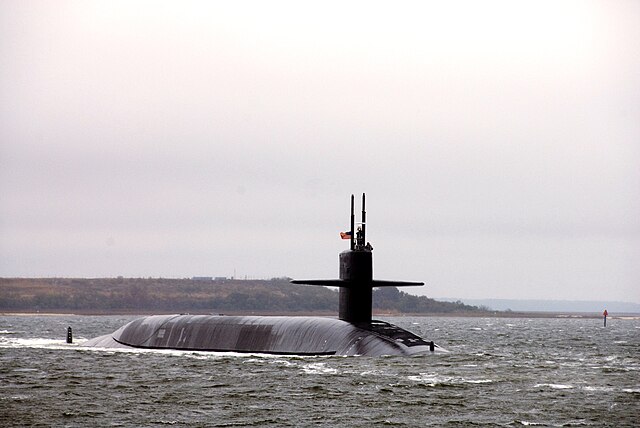
KINGS BAY, Ga. (Jan. 11, 2010) The Ohio-class ballistic-missile submarine USS West Virginia (SSBN 736) departs Naval Submarine Base Kings Bay, Ga. West Virginia is scheduled for an engineering refueling overhaul at Norfolk Naval Shipyard in Portsmouth, Va., next month. (U.S. Navy photo by Mass Communication 1st Class James Kimber/Released)
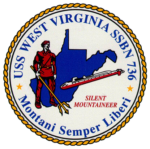 SSBN-736 was ordered on 21 November 1983, laid down on 18 December 1987, launched on 14 October 1989, completed on 10 September 1990, commissioned on 20 October 1990. The cold war sitll had a few months to live. She was commanded by Captain J. R. Harvey (Blue) and Captain Donald McDermott (Gold). On 29 December 2008, Captain Daniel Mack SubCom 16/20, relieved of command USS West Virginia’s CO, Cdr Charles “Tony” Hill “due to a loss of confidence” in his ability to command. Captain Stephen Gillespie ws appointed temporary commanding officer. In September 2010 the combined 300 Sailors assigned of alternate patrols merged into a 110 crew during the overhaul-refueling done at Norfolk in Portsmouth from early 2011. Commander Adam D. Palmer relieved Steven K. Hall in a change of command ceremony of 9 September at Naval Medical Center in Portsmouth and Cdr Joseph W. Coleman relieved Palmer on 25 November 2014 at St. Mary’s Waterfront. On 24 October 2013, USS West Virginia departed Norfolk after the conclusion of her 36-month OVL. On 3 November 2013 she was back at Kings Bay and on 25 October 2022, she was the first SSBN to dock at remote British territory island, in Diego Garcia. Today posted at Naval Submarine Base Kings Bay after 34+ years service, more to come.
SSBN-736 was ordered on 21 November 1983, laid down on 18 December 1987, launched on 14 October 1989, completed on 10 September 1990, commissioned on 20 October 1990. The cold war sitll had a few months to live. She was commanded by Captain J. R. Harvey (Blue) and Captain Donald McDermott (Gold). On 29 December 2008, Captain Daniel Mack SubCom 16/20, relieved of command USS West Virginia’s CO, Cdr Charles “Tony” Hill “due to a loss of confidence” in his ability to command. Captain Stephen Gillespie ws appointed temporary commanding officer. In September 2010 the combined 300 Sailors assigned of alternate patrols merged into a 110 crew during the overhaul-refueling done at Norfolk in Portsmouth from early 2011. Commander Adam D. Palmer relieved Steven K. Hall in a change of command ceremony of 9 September at Naval Medical Center in Portsmouth and Cdr Joseph W. Coleman relieved Palmer on 25 November 2014 at St. Mary’s Waterfront. On 24 October 2013, USS West Virginia departed Norfolk after the conclusion of her 36-month OVL. On 3 November 2013 she was back at Kings Bay and on 25 October 2022, she was the first SSBN to dock at remote British territory island, in Diego Garcia. Today posted at Naval Submarine Base Kings Bay after 34+ years service, more to come.
 Kentucky SSBN-737
Kentucky SSBN-737
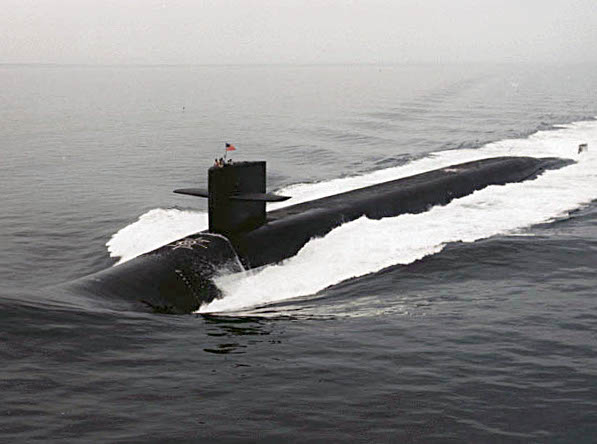
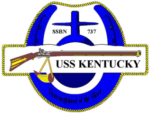 SSBN-737 was ordered on 13 August 1985, laid down on 18 December 1987, launched on 11 August 1990, completed on 27 June 1991, commissioned on 13 July 1991.
SSBN-737 was ordered on 13 August 1985, laid down on 18 December 1987, launched on 11 August 1990, completed on 27 June 1991, commissioned on 13 July 1991.
When launched she was sponsored by Carolyn Pennebaker Hopkins, who used a custom blend of Kentucky bourbon whiskey mixed with champagne to christen her. She entered service with Captain Michael G. Riegel (Blue Crew) and Captain Joseph Henry (Gold Crew). On 19 March 1998 south of Long Island (New York) she collided with USS San Juan (SSN-751). No personnel injuries, light damage. This happened during a joint training drill before her first deployment. One stern plane repaired and San Juan’s forward ballast was breached and repaired.
In 2001 and 2002 her Gold Crew won 1st place for the Atlantic Fleet (Captain Edward F. Ney Memorial Award) in a galley competition for outstanding food service. Blue and Gold Crews earned the Omaha Trophy for 2009. On 12 October 2011 she nearly lost her periscopes when turned onto a new course blocking the Totem Ocean ship Midnight Sun and just avoided collision 800 meters from the freighter, near British Columbia (Strait of Juan de Fuca). In January 2012 she had her Engineering Refueling Overhaul at Puget Sound. On 7 November 2015 she launched an unarmed missile in test which was took for an UFO and tempested on social media, even reported by the Southern California broadcast. On 13 March 2016 she started her first patrol since 2011.
On July 18 2023 she visited the Busan Naval Base in South Korea, first for 40 years. She also visited HMNB Clyde as a show of force. She was toured by President Yoon Suk Yeol and General Paul LaCamera (ROK-U.S. Combined Forces Command) commenting the visit was an “ironclad U.S. commitment to defending the Republic of Korea.” Today she is posted at the Naval Base Kitsap in Washington. 33 years+ service done, more to come.
 USS Maryland SSBN-738
USS Maryland SSBN-738
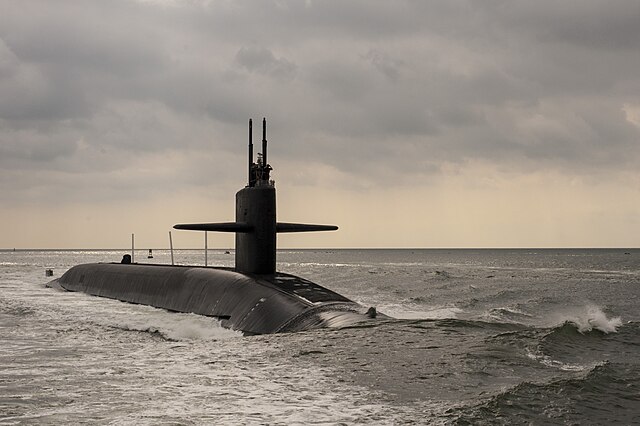
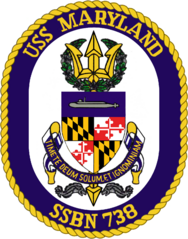 SSBN-738 was ordered on 14 March 1986, laid down on 22 April 1986, launched on 10 August 1991, completed on 31 May 1992, commissioned on 13 June 1992. She departed Groton for Kings Bay on 15 June 1992 and passed her strategic certification, first launch on 29 Jul 1992 and Shakedown (DASO) on 7 July 1992 to 22 October 1992. She was back to Groton on 30 January 1993 for post-shakedown maintenance and was back to Kings Bay in Georgia on 9 April 1993, completing more certifications and on 4 May 1993 joined SubRon 20 followed by a first strategic deterrent patrol from 19 June 1993. On 21 September 2012 she combined crews for her mid-life refueling overhaul at Norfolk.
SSBN-738 was ordered on 14 March 1986, laid down on 22 April 1986, launched on 10 August 1991, completed on 31 May 1992, commissioned on 13 June 1992. She departed Groton for Kings Bay on 15 June 1992 and passed her strategic certification, first launch on 29 Jul 1992 and Shakedown (DASO) on 7 July 1992 to 22 October 1992. She was back to Groton on 30 January 1993 for post-shakedown maintenance and was back to Kings Bay in Georgia on 9 April 1993, completing more certifications and on 4 May 1993 joined SubRon 20 followed by a first strategic deterrent patrol from 19 June 1993. On 21 September 2012 she combined crews for her mid-life refueling overhaul at Norfolk.
On 24 September 1993 she ran aground at Port Canaveral during a medical evacuatio. Inspection showed minimal damage and the crew was not responsible. She started her 2nd patrol on 26 September 1993. She took part in seven Commander’s Evaluation Tests (FCET) of her Trident D-5 SLBM missile system. She fired each time a specially modified missile without nuclear payload to test performances. Thus happened on 3 January 1994 (4), 21 April 1996 (2), 26 April 1999 (2), 5 November 2003 (2), 21 November 2006 (2), 8 June 2010 (2), 9 June 2010 (2). On 16 October 2001 she joined the USS John F. Kennedy (CV-67) CBG in a sink exercise, she fired one live Mark 48 torpedo sinking ex-USS Guam (LPH-9). She was awared the 1995, 1997n 2001, 2002, 2004, 2008, 2009 SubRon 20 Battle “E”, 2003 Captain Edward F. Ney Memorial award (food service), 2005 CNO Afloat Safety award, 2008 Omaha Trophy winner. Today based at the Naval Submarine Base in Kings Bay, Georgia, with SubRon 20n 32+ years service and more to come.
 Nebraska SSBN-739
Nebraska SSBN-739
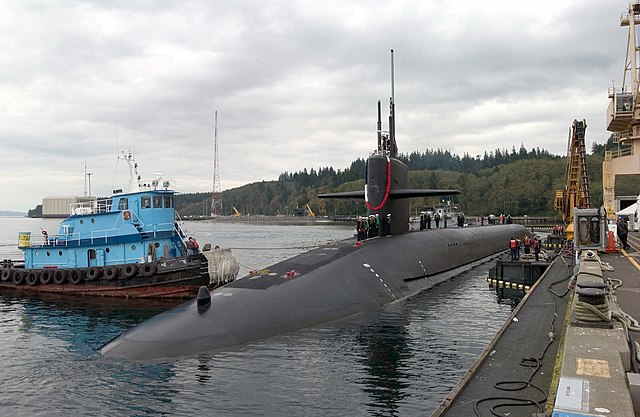
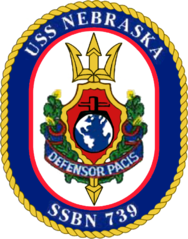 SSBN-739 was ordrered on 26 May 1987, laid down on 6 July 1987, launched on 15 August 1992, completed on 18 June 1993 and commissioned on 10 July 1993. Nebraska was originally assigned to SubGroup 10, Naval Subm. Base Kings Bay in Georgia. On 1 October 2004 she was transferred to SubRon 17, SubGroup 9 at Naval Base Kitsap in Bangor. In 2013 she was transferred to SubRon 19 for her main Engineering Refueling Overhaul. She launched missiles in 1993, in 2004, 2008, 2011, 2018 and in 2019. On November 2013 she completed 62 deterrent patrols over 20 years, 77 days in average and 35 days of maintenance.
SSBN-739 was ordrered on 26 May 1987, laid down on 6 July 1987, launched on 15 August 1992, completed on 18 June 1993 and commissioned on 10 July 1993. Nebraska was originally assigned to SubGroup 10, Naval Subm. Base Kings Bay in Georgia. On 1 October 2004 she was transferred to SubRon 17, SubGroup 9 at Naval Base Kitsap in Bangor. In 2013 she was transferred to SubRon 19 for her main Engineering Refueling Overhaul. She launched missiles in 1993, in 2004, 2008, 2011, 2018 and in 2019. On November 2013 she completed 62 deterrent patrols over 20 years, 77 days in average and 35 days of maintenance.
After Patrol 54 she was awarded the “Battle E” for SubRon 17. She was awarded a battle “E” for Patrol 56, and completed a 116-day patrol by late 2013 with a fourth “Battle E”. Today at Kistap Bay base, 31+ years in active service.
 Rhode Island SSBN-740
Rhode Island SSBN-740
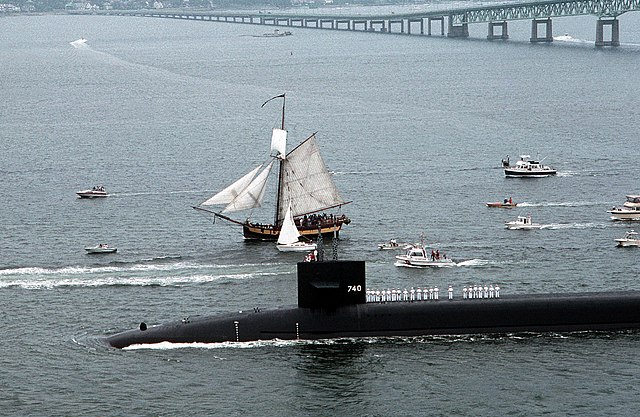
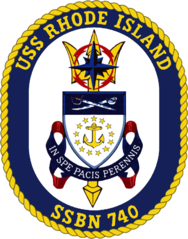 SSBN-740 was ordered on 15 January 1988, laid down on 15 September 1988, launched on 17 July 1993, completed on 22 June 1994, commissioned on 9 July 1994 with Captain John K. Eldridge, Blue Crew and Commander Michael Maxfield, Gold Crew. On 11 August 2009 she rescued five Bahamian fishermen after the loss of their boat on 7 August 2009. Her medical staff cared before transfer to another ship to shore. In 2010 she was awarded a Battle “E” and in 2011 Rhode Island the Omaha Trophy. From December 2015 to August 2018, she had her major Engineered Refueling Overhaul at Norfolk Naval Shipyard. On 1 November 2022, she made a visit to Gibraltar (scheduled). Today she is still based at Kings Bay, Georgia after 30+ years service, more to come.
SSBN-740 was ordered on 15 January 1988, laid down on 15 September 1988, launched on 17 July 1993, completed on 22 June 1994, commissioned on 9 July 1994 with Captain John K. Eldridge, Blue Crew and Commander Michael Maxfield, Gold Crew. On 11 August 2009 she rescued five Bahamian fishermen after the loss of their boat on 7 August 2009. Her medical staff cared before transfer to another ship to shore. In 2010 she was awarded a Battle “E” and in 2011 Rhode Island the Omaha Trophy. From December 2015 to August 2018, she had her major Engineered Refueling Overhaul at Norfolk Naval Shipyard. On 1 November 2022, she made a visit to Gibraltar (scheduled). Today she is still based at Kings Bay, Georgia after 30+ years service, more to come.
 Maine SSBN-741
Maine SSBN-741
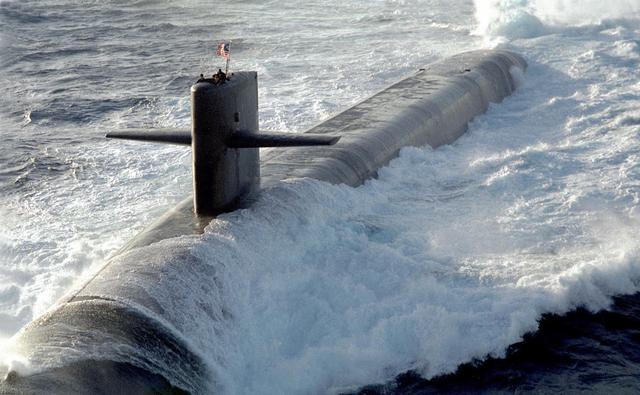
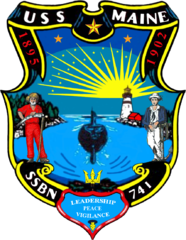 USS Maine was ordered on 5 October 1988, laid down on 3 July 1990, launched on 16 July 1994, completed on 21 June 1995, and commissioned on 29 July 1995. She was homeported at Naval Base Kitsap in Bangor from December 2005 and prior to that affectation she was based at Sub Base Kings Bay in Georgia from August 1995. She was featured in fiction, playing a major role in Tom Clancy’s novel The Sum of All Fears and the movie derived from the novel. Today she is based at Naval Base Kitsap in Washington, 29+ years service.
USS Maine was ordered on 5 October 1988, laid down on 3 July 1990, launched on 16 July 1994, completed on 21 June 1995, and commissioned on 29 July 1995. She was homeported at Naval Base Kitsap in Bangor from December 2005 and prior to that affectation she was based at Sub Base Kings Bay in Georgia from August 1995. She was featured in fiction, playing a major role in Tom Clancy’s novel The Sum of All Fears and the movie derived from the novel. Today she is based at Naval Base Kitsap in Washington, 29+ years service.
 Wyoming SSBN-742
Wyoming SSBN-742
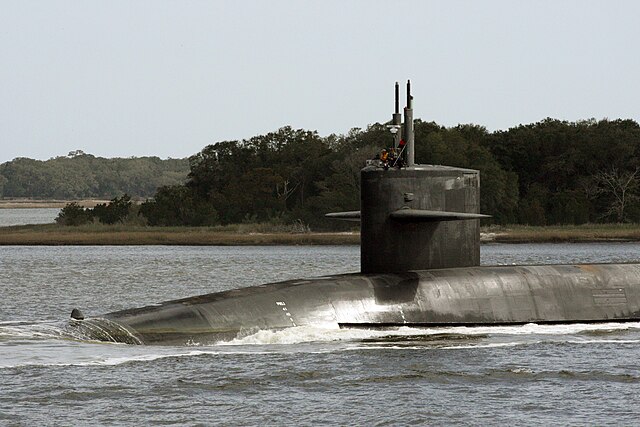
 SSBN-742 was ordered on 18 October 1989, laid down on 8 August 1991, launched on 15 July 1995, completed on 20 June 1996 and commissioned on 13 July 1996. On 26 July 1996 she arrived at Kings Bay as the 9th submarine home-ported there. On 6 June 2012, she took part in an historic medevac exercise with a Bell V-22 Osprey after a 12,000 nautical mile flight, to collect a stretcher on her deck. On 7 January 2018 she syarted her major midlife overhaul and refuel at Norfolk Naval Shipyard over 27-month overhaul with many upgrades and new berthing spaces for enlisted women. In 2011 she indeed took on female officers. Between November 2013 and March-June 2014, four women were secretly recorded in the shower by midshipmen and officers and later up to twelve, all petty officers were implicated atfter recording with smartphone and sharing these; Ten were prosecuted and convicted from prison time pay reduction.
SSBN-742 was ordered on 18 October 1989, laid down on 8 August 1991, launched on 15 July 1995, completed on 20 June 1996 and commissioned on 13 July 1996. On 26 July 1996 she arrived at Kings Bay as the 9th submarine home-ported there. On 6 June 2012, she took part in an historic medevac exercise with a Bell V-22 Osprey after a 12,000 nautical mile flight, to collect a stretcher on her deck. On 7 January 2018 she syarted her major midlife overhaul and refuel at Norfolk Naval Shipyard over 27-month overhaul with many upgrades and new berthing spaces for enlisted women. In 2011 she indeed took on female officers. Between November 2013 and March-June 2014, four women were secretly recorded in the shower by midshipmen and officers and later up to twelve, all petty officers were implicated atfter recording with smartphone and sharing these; Ten were prosecuted and convicted from prison time pay reduction.
On 9 October 2020 she completed a 27-month overhaul and returned to Kings Bay. On 17 September 2021, USS Wyoming made a two-missile test flight on the Eastern Test Range, Cape Canaveral. Wyoming also had an exchange of command at sea, in January 2022 to demonstrate operational flexibility. She is now at the Naval Submarine Base of Kings Bay, Georgia after 28+ years of service.
 Louisiana SSBN-743
Louisiana SSBN-743
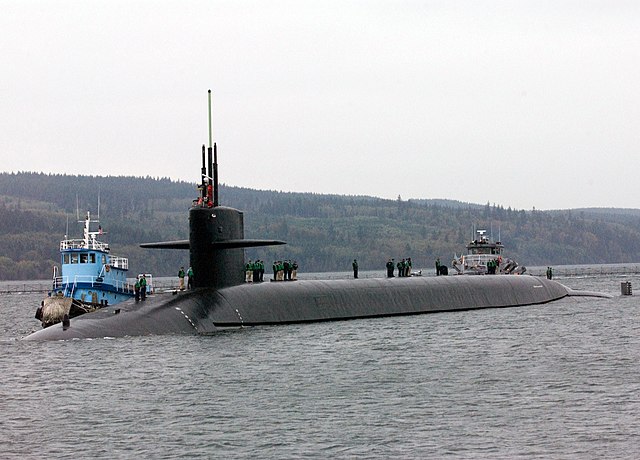
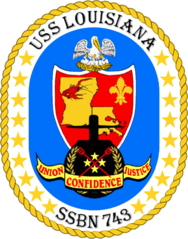 SSBN-743 was ordered on 19 December 1990, laid down on 23 October 1992, launched on 27 July 1996, completed on 14 August 1997 and commissioned on 6 September 1997. She was first based at Kings Bay, operating 10 Ohio class subs. With the end of the Cold War and reorganization a nuclear policy review recommended to only keep 14 Ohio as SSBNs by 2005. The four oldest were not retied and instead converted as SSGNs. To balance the remaining fleet between the Atlantic Fleet and Pacific Fleet, five Ohio-class were relocated to the Pacific between 2002 and 2005: USS Pennsylvania, Kentucky, Nebraska, Maine, and Louisiana from Kings Bay to Naval Base Kitsap in the state of Washington.
SSBN-743 was ordered on 19 December 1990, laid down on 23 October 1992, launched on 27 July 1996, completed on 14 August 1997 and commissioned on 6 September 1997. She was first based at Kings Bay, operating 10 Ohio class subs. With the end of the Cold War and reorganization a nuclear policy review recommended to only keep 14 Ohio as SSBNs by 2005. The four oldest were not retied and instead converted as SSGNs. To balance the remaining fleet between the Atlantic Fleet and Pacific Fleet, five Ohio-class were relocated to the Pacific between 2002 and 2005: USS Pennsylvania, Kentucky, Nebraska, Maine, and Louisiana from Kings Bay to Naval Base Kitsap in the state of Washington.
On 18 August 2016, she collided with USNS Eagleview (special warfare support vessel) when conducting operations in the Strait of Juan de Fuca. Damage wa sinspected and limited to her forward starboard hull being superficially bruised. The SAC Consultation Committee presented the Omaha Trophy in 1971 on behalf of the citizens of Omaha to be awarded annually to and outstanding unit, reaching four different categories, including the Submarine Ballistic Missile Command. On 31 May 2007, Louisiana won the 2006 Trophy in her category as “demonstrating the highest standards of performance”. Which impled both Blue Crew and Gold Crew eneeded to achieve a rating excellent in every category possible and passed formal evaluations, but this also included involvement and humanitarian actions. Blue and Gold crews also received the Meritorious Unit Commendation from CNO Admiral Gary Roughead on 17 February 2009 when visiting Kitsap. She became the first ballistic missile submarine to be awarded such Unit Commendation since 2001. She is now based at Naval Base Kitsap, Washington after 27 years+ service.
Read More/Src
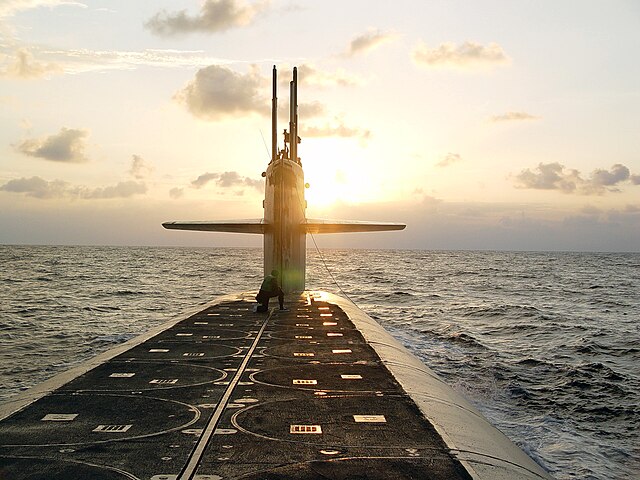
KINGS BAY, Ga. (Jan. 9, 2008) The Ohio-class ballistic-missile submarine USS Wyoming (SSBN 742) approaches Naval Submarine Base Kings Bay, Ga. Wyoming is the 17th submarine in the Ohio-class and the fourth U.S. Naval ship to be named after the 44th state of the Union. (U.S. Navy photo by Lt. Rebecca Rebarich/Released)
Books
Chant, Chris (2005). Submarine Warfare Today. Leicester, United Kingdom: Silverdale Books.
Chinworth, William C. (15 March 2006). The Future of the Ohio Class Submarine (PDF) (Master of Strategic Studies thesis). Carlisle Barracks.
Genat, Robert; Genat, Robin (1997). Modern U.S. Navy Submarines. Osceola, Wisconsin: Motorbooks International.
Dalgleish, D. Douglas; Schweikart, Larry (1984). Trident. Carbondale, IL: Southern Illinois University Press.
Hutchinson, Robert (2006). Jane’s Submarines War Beneath the Waves: From 1776 to the Present Day. New Line Books.
Links
USAWC STRATEGY RESEARCH PROJECT: THE FUTURE OF THE OHIO CLASS SUBMARINE by Commander William C. Chinworth, United States Navy Captain John M. Crochet Project Adviser
https://en.wikipedia.org/wiki/Ohio-class_submarine
https://commons.wikimedia.org/wiki/Category:Ohio_class_submarines
https://www.everycrsreport.com/reports/R41129.html
Videos
Model Kits
U.S.S. Ohio vs Soviet Alfa class DML DML | No. 7002 | 1:700
Also made by Shanghai Dragon, Italeri and Dragon.
Ohio Class SSBN / SSGN available through Maryland Silver J&D Productions 1:192
USS Georgia SSBN-729 Blue Ridge Models 1:350 BRM-35006
USS Maryland SSBN-738 & USS Chicago SSN-721 Cyber Hobby 1:350
U.S.S. Ohio DML DML 1:350
USS Ohio Nuclear Submarine Testors 1:350
More on scalemates

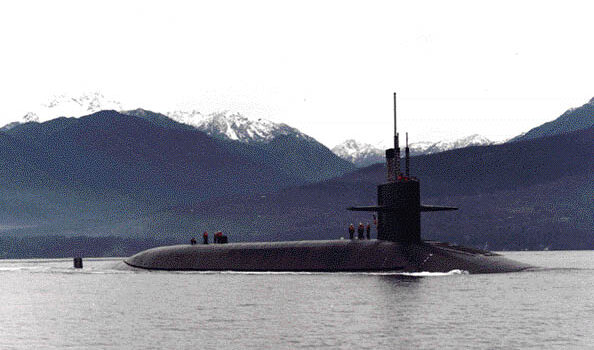
 Latest Facebook Entry -
Latest Facebook Entry -  X(Tweeter) Naval Encyclopedia's deck archive
X(Tweeter) Naval Encyclopedia's deck archive Instagram (@navalencyc)
Instagram (@navalencyc)





 French Navy
French Navy Royal Navy
Royal Navy Russian Navy
Russian Navy Armada Espanola
Armada Espanola Austrian Navy
Austrian Navy K.u.K. Kriegsmarine
K.u.K. Kriegsmarine Dansk Marine
Dansk Marine Nautiko Hellenon
Nautiko Hellenon Koninklije Marine 1870
Koninklije Marine 1870 Marinha do Brasil
Marinha do Brasil Osmanlı Donanması
Osmanlı Donanması Marina Do Peru
Marina Do Peru Marinha do Portugal
Marinha do Portugal Regia Marina 1870
Regia Marina 1870 Nihhon Kaigun 1870
Nihhon Kaigun 1870 Preußische Marine 1870
Preußische Marine 1870 Russkiy Flot 1870
Russkiy Flot 1870 Svenska marinen
Svenska marinen Søværnet
Søværnet Union Navy
Union Navy Confederate Navy
Confederate Navy Armada de Argentina
Armada de Argentina Imperial Chinese Navy
Imperial Chinese Navy Marinha do Portugal
Marinha do Portugal Mexico
Mexico Kaiserliche Marine
Kaiserliche Marine 1898 US Navy
1898 US Navy Sovietskiy Flot
Sovietskiy Flot Royal Canadian Navy
Royal Canadian Navy Royal Australian Navy
Royal Australian Navy RNZN Fleet
RNZN Fleet Chinese Navy 1937
Chinese Navy 1937 Kriegsmarine
Kriegsmarine Chilean Navy
Chilean Navy Danish Navy
Danish Navy Finnish Navy
Finnish Navy Hellenic Navy
Hellenic Navy Polish Navy
Polish Navy Romanian Navy
Romanian Navy Turkish Navy
Turkish Navy Royal Yugoslav Navy
Royal Yugoslav Navy Royal Thai Navy
Royal Thai Navy Minor Navies
Minor Navies Albania
Albania Austria
Austria Belgium
Belgium Columbia
Columbia Costa Rica
Costa Rica Cuba
Cuba Czechoslovakia
Czechoslovakia Dominican Republic
Dominican Republic Haiti
Haiti Hungary
Hungary Honduras
Honduras Estonia
Estonia Iceland
Iceland Eire
Eire Equador
Equador Iran
Iran Iraq
Iraq Latvia
Latvia Liberia
Liberia Lithuania
Lithuania Mandchukuo
Mandchukuo Morocco
Morocco Nicaragua
Nicaragua Persia
Persia San Salvador
San Salvador Sarawak
Sarawak Uruguay
Uruguay Venezuela
Venezuela Zanzibar
Zanzibar Warsaw Pact Navies
Warsaw Pact Navies Bulgaria
Bulgaria Hungary
Hungary

 Bundesmarine
Bundesmarine Dutch Navy
Dutch Navy Hellenic Navy
Hellenic Navy Marina Militare
Marina Militare Yugoslav Navy
Yugoslav Navy Chinese Navy
Chinese Navy Indian Navy
Indian Navy Indonesian Navy
Indonesian Navy JMSDF
JMSDF North Korean Navy
North Korean Navy Pakistani Navy
Pakistani Navy Philippines Navy
Philippines Navy ROKN
ROKN Rep. of Singapore Navy
Rep. of Singapore Navy Taiwanese Navy
Taiwanese Navy IDF Navy
IDF Navy Saudi Navy
Saudi Navy Royal New Zealand Navy
Royal New Zealand Navy Egyptian Navy
Egyptian Navy South African Navy
South African Navy






























 Ukrainian Navy
Ukrainian Navy dbodesign
dbodesign